


JUNE 19-JULY 3, 2024 | VOL 34, ISSUE 01 | FREE SUMMER DINING Plus Juneteenth Issue
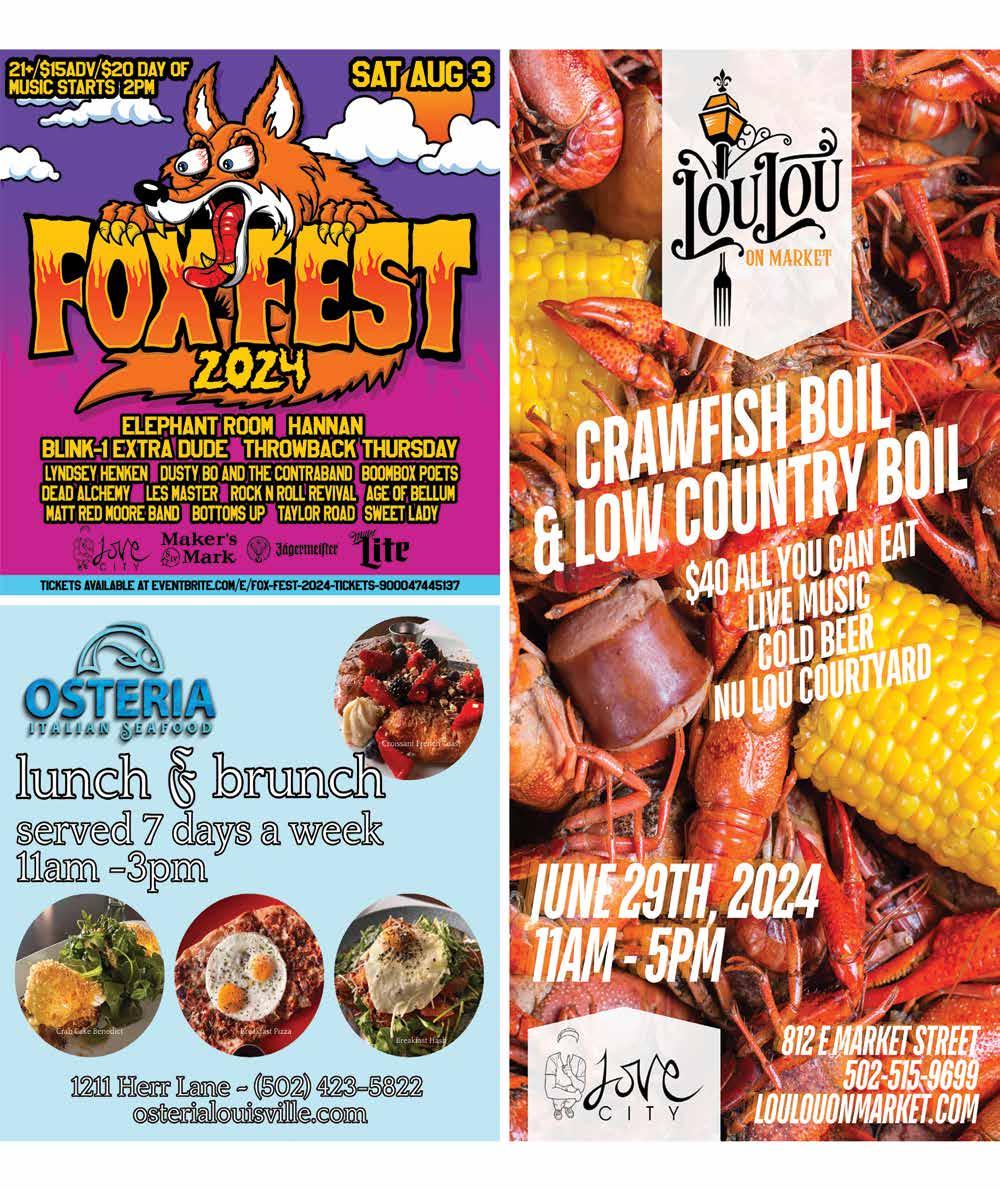

JUNE 19-JULY 2, 2024 LEO WEEKLY | 3


Piedmont
Photo
EDITORIAL
Editor in Chief
Erica Rucker
Digital Media Editor
Sydney Catinna
Culture Writer - Aria Baci
News Writer - Caleb Stultz
CREATIVE
Creative Director - Haimanti Germain
Graphic Designer - Aspen Smit
BUSINESS MANAGER
Elizabeth Knapp
DIRECTOR OF SALES
Marsha Blacker
CONTRIBUTORS
Robin Garr, Jeff Polk, Ted Shlechter, Tracy Heightchew, Dan Savage, Marc Murphy, Rob Brezsny, Sarah Ladd (Kentucky Lantern)
Chief Executive Officer
Chris Keating
Vice President of Digital Services
Stacy Volhein
Digital Operations Coordinator
Elizabeth Knapp
Director of Operations
Emily Fear
Chief Financial Officer
Guillermo Rodriguez



4 | LEO WEEKLY JUNE 19-JULY 2, 2024
SERVICES
EDITOR’S NOTE 5 NEWS & ANALYSIS 9 FEATURE 10 • Jug Bands Celebrate Rich Legacy of Black Music • Black Health Matters STAFF PICKS 16 MUSIC 18 FOOD & DRINK 21 ARTS & CULTURE 24 ETC 28 ON THE COVER:
Bluz plays the Summer Swing, Saturday June 22
Courtesy of Summer Swing LEO Weekly is published weekly by LEO Weekly LLC. Copyright LEO Weekly LLC. All rights reserved. The opinions expressed herein are exclusively those of the writers and do not necessarily reflect the position of the Publisher. LEO Weekly is available free of charge, limited to one copy per reader. No portion may be reproduced in whole or in part by any means, including electronic retrieval systems, without the express permission of LEO Weekly LLC. LEO Weekly may be distributed only by authorized independent contractors or authorized distributors. Louisville Eccentric Observer (LEO) is a trademark of LEO Weekly LLC.
MARC MURPHY
EDITOR’S
UNSUNG: A PRIDE MONTH INVITE
BY ERICA RUCKER

Erica Rucker is LEO Weekly’s editor-in-chief. In addition to her work at LEO, she is a haphazard writer, photographer, tarot card reader, and fair-to-middling purveyor of motherhood. Her earliest memories are of telling stories to her family and promising that the next would be shorter than the first. They never were.
In my life, I’ve always known someone who is gay. Always. From the time I was a child when my father would say someone was “sweet,” or “queer” (back when that was a not-so-nice phrase), I was always adjacent to people in the LGBTQ+ community. They were in my family. They were my neighbors, and eventually they were some of the closest and most dear members of my friend group… my chosen family.
With this being Pride month, and in all of the celebrations, I started thinking about some moments that made me realize that the joy of being yourself could at times come with great risk.
When I was in high school, at Male, my best guy friend at the time was a gay man. I knew it but this wasn’t the era that you ever asked that question. In the years since we’ve reconnected and he asked if I realized it back then. I mean, sort of but I didn’t even really have the terminology for it. I was green but I knew that I was securely in the friend zone and my crushes were always other boys. Hell, at this point, I was such a weirdo, my actual crushes were probably members of Duran Duran and not even boys that I knew.
When I changed high schools to Seneca, there was a young person, who I only recall being called “Corky.” I am positive this was a derogatory nickname because they were a completely out queer person. They often ran up against the uptight administration, and rude kids, as they would challenge gender norms on the regular. Whether it was makeup, or wearing a skirt, they were determined to be exactly who they were… even in the late ‘80s suburban high school. I hope some of you remember them and can tell me who they were. From a distance, I really admired them. I’ve always looked for the quiet heroes. There were others, some who I also have reconnected with and am happy to see them living as they are — in their truth. Free.
As I grew, my friends who are gay have never had to hide themselves from me, or my family. Our house was a safe space for anyone, most especially folks who others might cast aside.
Despite my dad’s silly comments in private, he welcomed all of our unique friends, and truly cared about them like they were his own
children, or even befriended them with his entire heart. He didn’t make the connection, though, between his speech and his practice until much later. But his home was their home, all the time.
By the time this note is published, one of my dearest friends will share their story about Pride events and, in that, raise a challenge to the Kentuckiana Pride Festival to find a way to keep the gates open. Even if that means, a paid concert becomes a separate thing. It isn’t a complaint but a tender plea to try as much as possible to avoid putting limits on one of the few places where the LGBTQ+ community can come together, meet, learn, and organize. In these safe places, change has been monumental. These quiet heroes have found ways to continue even if it means gathering the strength to wear their makeup or don a skirt in a classroom. Having a gathering place is a recharge. It’s integral.
Black folks (and Black queer folks) deeply understand this. Recharging with each other is equally as powerful.
When you are with those who have lived and grown in a similar experience, you find compassion, care and a place to drop the pretenses of trying to fit into this broken place we call “America.”
The cloak of righteousness is strong in the right wing parties of the world right now. Even as their own houses are crumbling, they are trying to attack everyone around them — most outwardly trans children — instead of fixing their own foundations.
As those voices that oppose the LGBTQ+ community grow louder, it’s important for me to remember that, like my own rights as a Black person, the queer community has to continuously fight for safety and the right to simply exist in peace. As an ally, my job is to fight behind them, and to make space for them when they need it.
In honor of all the quiet heroes I’ve known or observed in my life, if you are part of this community and have something to share, send it to me. If you aren’t but you want to spew hatred, keep your mouth shut, and computer closed, because I’m not accepting your inane rants right now.
JUNE 19-JULY 2, 2024 LEO WEEKLY | 5
NOTE
BRING PRIDE BACK TO THE PEOPLE
BY CIRCE
My first Gay Pride Parade was viewed through a greasy window of a Burger King in Toronto, 1991. My family stumbled upon it as we were visiting our family in Canada. The spectacle was something that my twelve year old brain did not think was possible. Colorful balloons, confetti, glitter, an occasional topless person here or there, and SO MUCH SPARKLE….it was amazing.
In 1997, I even had the opportunity to hold the lead parade banner in my hometown of Louisville, KY. It was called “The March for Justice and Pride Parade” back then. There was no Kentuckiana Pride Festival until 2001.
Every year, in June, I have attended a Pride festival or more, traveling to near by festivals, such as one of my favorite spots, Columbus, OH. I always looked forward to public and

There were men holding hands with men, women kissing women, drag queens in beautiful sequined gowns with tiaras and sashes, leather vested women with tattoos, signs that said “Hate, prejudice and bigotry are not family values.” I knew it was possible, but never saw it with my own eyes.
Even at twelve, I knew I was attracted to other girls but coming out in a first generation immigrant catholic family was scary in the 90s. This event was real and it was open to the public to see, visible representation of what I NEEDED to feel included and seen and not feel so different and alone. Of course this opened me up to search out other events when I was old enough to venture on my own and find people like me.
fairly-safe space that was provided for me to hold my girlfriend’s hand or kiss the one I love.
And the year that same-sex marriage became legal, I found my special person. And ever since then, my family and I have made it a tradition to attend Pride Festivals in the area, such as the very family-friendly Southern Indiana Pride and of course my own Kentuckiana Pride Festival.
Fast forward to 2024, my wife and I take our twelve year old son to the Kentuckiana Pride Parade. We normally watch the parade from the side lines and cheer for all the fun floats that scream “Love is Love” “Protect Trans Kids” “God Loves Gays”.
We love seeing Louisville Youth Group and Fairness with their rainbow balloon wings.
We feel safe to accept “Free Mom Hugs” from strangers who are allies marching along side the floats. There is so much excitement to see SO many people like me and where the LGBTIA+ community is visible to everyone. My family and I usually purchase inexpensive tickets at the gate after following behind the parade.
This year, the tickets to the festival were capped and sold out days before the festival. So, many of the queer families, like mine, were unable to enter the festival. Outside of the chain-linked fencing, I spoke with several friends, including one of my trans friends who said , “It feels like we are being thrown back into the closet.” (Referring to being denied entry to our very own gay pride.)
I even spoke to a group of young queer young adults, dressed in their best rainbow and glitter gear, toting rainbow balloon wings given to them. This was their first Pride event without their parents and they were so disappointed they couldn’t get into the festival they were so looking forward to.
I think this year’s Kentuckiana Pride Festival shows that the true purpose of Pride was lost in the hype.
Any Pride event is an opportunity to connect with other LGBTIA+ in the community, see drag performances, peruse the booths that educate you on community resources, booths that tell you where the next queerfriendly theater performance is located, a safe space for those that feel excluded for who they are and who they love.
I was sad I wasn’t able to experience My Pride Festival like I have in the past. Even sadder that these young queers and my gay son had no opportunity to connect with others within the festival.
I’m grateful that Louisville gets big ticket concerts that are gay/queer friendly. I just wish the high ticket concert had their own separate space from the rest of the festival.
Pride festivals are sometimes the only outlet that is safe for some of my LGBTIA+ folks and Kentuckiana Pride Festival failed those who were unable to attend this year.
PRIDE STARTED WITH A RIOT, and the purpose of pride was to give the LGBTIA+ community a voice and visibility to the world. LGBTIA+ very existence being attacked everyday by legislation passed by lawmakers across our country, so let’s not forget why our community needs Pride festivals to be open to everyone. Hopefully next year Kentuckiana Pride Festival Committee will leave the profitable concert to a separate event area and keep the festival open to those who need it, OUR COMMUNITY.
6 | LEO WEEKLY JUNE 19-JULY 2, 2024 VIEWS
Fairness campaign marches for kentuckiana pride 2023 Erica Rucker
POLITICAL POLLS: DON’T TAKE THEM SERIOUSLY
BY THEODORE M. SHLECHTER
“There
are lies, damn lies and statistics”
–Benjamin
Disraeli, British Prime Minister in the 19th Century
There are political polls, polls, polls these days. I’m obsessed with these polls. Read them every morning, noon, and night. Get angry when these polls are bad for my favorite candidate(s). Get excited when they show more favorable results. I should know much better to take them seriously this early in the presidential campaign.
For you see, political polls have been following me around since I was a graduate student in educational psychology and research. I have been analyzing them ever since. Analyzed them for my political blog. Analyzed them for political candidates. Have discussed them with national authorities on polling.
I have learned what political polls are not. They are rarely accurate predictors of actual elections. Pollsters cannot predict with certainty who is or is not going to vote in an election. Polling corporations have developed sophisticated models of identifying likely voters for a particular election. These models can be problematic.
Nearly all of the currently reported polls are based upon a pool of registered voters. A percentage of these voters will not vote in the presidential election. The non-voters are driving Trump’s lead in the polls. Don’t believe me, then believe Nate Cohn, eminent political guru for the NY Times. He recently noted in a NY Times column: (Trump’s lead in the polls is) “built on gains among voters who aren’t paying close attention to politics, who don’t follow traditional news and who don’t regularly vote.” We thus don’t know if Trump is leading with likely voters.
Furthermore, Professor Larry Sabato of the University of Virginia has noted: “For our general election outlook, we are not taking current polling much into account
right now. Biden’s national polling right now is probably worse than what our ratings reflect.” Listen to the good and wise Professor.
Pundits tell us that political polls are a picture in time of potential voter behavior. NOT TRUE. They are a fuzzy picture (full of possible errors). A measurement of error (MOE) is inherent in any polling data. This sampling error is usually between 1.5 and 3 points for all sampled candidates. A poll might, for example, show Trump with 47% of the vote and Biden with 45%, and has an MOE of 2. This statistic must be interpreted (which rarely is done by pundits) as Trump having between 49 and 45 percent of the vote and Biden having between 47 and 43 percent. Biden may then be in the lead or badly trailing Trump.
Polls may also contain internal errors that are beyond the MOE. Simply put, a poll should be a stratified sample of the voting population. Some polls may have oversampled Democratic voters and others Republican voters. You don’t know.
Don’t fret if your favorite candidate is not winning now. Don’t listen to the chitchat on your favorite news outlet. Don’t become like me, obsessed with questionable poll data.

JUNE 19-JULY 2, 2024 LEO WEEKLY | 7
VIEWS





8 | LEO WEEKLY JUNE 19-JULY 2, 2024
KENTUCKY RANKS IN THE TOP 10 FOR RACIAL EQUALITY IN EDUCATION IN THE US
The rank comes from WalletHub which took a survey across the country
BY CALEB STULTZ
Racial equality in Kentucky’s education is among the highest in the country, ranking 7th in the nation based on a number of key indicators from a WalletHub study released on June 4.
Across the United States, predominantly white school districts receive $23 billion more funding per year than predominantly non-white districts. However, some states do more for racially diverse schools than others, with the Commonwealth coming in the top ten of the highest degrees of racial equality for education across the country.
There were six key indicators that WalletHub used to compare all 50 states in terms of racial equality.
Of those metrics, here is how Kentucky scored:
8th–Share of Adults with at Least a High School Degree
11th –Share of Adults with at Least a Bachelor’s Degree
10th–Standardized-Test Scores
11th–Mean SAT Score
12th–Average ACT Score
23rd–Public High School Graduation Rate
With these combined scores, Kentucky ranked in the top 10 in the country for racial equality with a total score of 60.21. New Mexico ranked first with a total score of 77.95, and Wisconsin ranked last with a combined total score of 13.00.
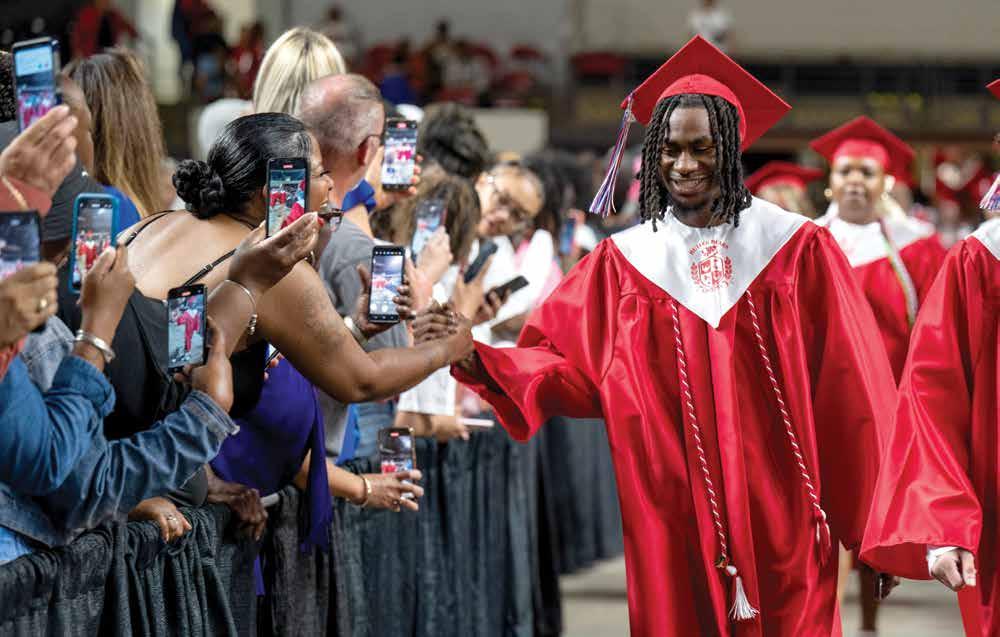
JUNE 19-JULY 2, 2024 LEO WEEKLY | 9
NEWS & ANALYSIS
The Commonwealth ranked 7th in racial equality based on research from WalletHub Jefferson County Public Schools
TRAUMA, POVERTY, COVID-19 CAUSING HIGH RATES OF CHRONIC ABSENTEEISM IN KENTUCKY
Absenteeism hurts kids’ ability to thrive. Reasons for it are complicated.
BY SARAH LADDBODY
from report
This story is by the Kentucky Lantern, which is part of States Newsroom, a network of news bureaus supported by grants and a coalition of donors as a 501c(3) public charity. More of Kentucky Lantern’s work can be found at kentuckylantern.com. Follow them on Facebook and Twitter.
The number of Kentucky youth who are chronically absent from school skyrocketed during the 2022-2023 school year. The reasons for chronic absenteeism are interconnected and complicated — and the negative fallout potential is widespread, from mental health to the economy. Kentucky Department of Education (KDE) staff and child welfare advocates point to the COVID-19 pandemic, and its ongoing fallout, as a key culprit in this crisis.
Building a habit of absenteeism in school carries over into work, said Florence Chang, a KDE program consultant.
“Chronically absent students, high school students, … are likely to be significantly higher in absences from work,” she said. “There’s some habits there built up that the same people who miss school are the same people that may call in and miss work.”
Absenteeism can also hurt a child’s ability to get a high school diploma or higher education.
“Even if a student were to drop out at 18 and pursue a GED, their earning power with the GED is not the same as it is with a high school diploma,” said Christina Weeter, KDE division director.
Child welfare advocates are keen to turn the trend around. They say doing so starts with parental communication and investments in comprehensive community services that serve kids outside the classroom.
By the numbers
In the 2017-2018 and 2018-2019 school years, about 17% of Kentucky children were chronically absent, according to Chang.
During the 2022-2023 school year, that number increased to 30%. (Data for the 20232024 school year is not yet available). This is even more critical for Eastern Kentucky, where 20% of students were chronically absent before COVID-19 and back-to-back deadly floods.
Now, half or more of the kids in Eastern Kentucky are chronically absent from school, Chang said.
“Even before the pandemic, that has been an issue in Eastern Kentucky,” she said. “And after the pandemic, and after the disaster hit that region … we can see that they have skyrocketed in absenteeism.”
In West and Western Kentucky, too, where deadly tornadoes hit in 2021, absenteeism rose.
“My suspicion is: it has to do with economically disadvantaged, poor counties maybe having less access … to resources, both learning resources and community resources,” said Chang.
A student is chronically absent if they miss more than 10% of their enrolled time at school, according to KDE. Absenteeism is different from truancy, which has legal implications, explained Weeter. A student can be absent for any reason.
The increase “is not specific to Kentucky,” Chang said. Chronic absenteeism is usually linked to barriers a student faces, like lack of transportation, a health condition or a work responsibility; aversion to school because of anxiety or lack of connection; disengagement from school following a time during the pandemic when children studied from home; and the idea that school is unsafe or one must stay home for every cough and sneeze.
“It’s likely it is complicated and a combination of the four reasons — not just one,” Chang said.
The 2024 Kentucky KIDS COUNT Data Book, released by Kentucky Youth Advocates (KYA) Monday, links these chronic absences to widespread trauma and poverty. Kids Count is part of a national initiative from the Annie E. Casey Foundation. What does the KIDS COUNT report show?
The new Kids Count report shows there are more Kentucky children not proficient in reading and math. It also shows more high school students are not graduating on time and more 3- and 4- year-olds aren’t in school.
According to the report, which tracks child welfare year to year:
• 69% of 4th graders scored below proficient in reading in 2022
• 79% of 8th graders scored below proficient in math in 2022
• 10% of high school students did not graduate on time in 2020-21
• 25% of children were chronically absent in 2021-22
• In 2022, 85% of Black students and 78% of Latino students were not at 4th grade reading proficiency
• 1% of English-language learners were at or above 8th grade math proficiency in 2022.
Terry Brooks, the executive director of KYA, said kids need enough food, good sleep, a reliable and safe way to get to school, and other supports like mental health services and tutoring to meet educational goals.
“To be clear, kids are more than their test scores,” Brooks said. “But these scores give us the tools to understand the realities of our classrooms and a roadmap around imaginative reforms and targeted interventions. Innovation in classroom rhythms, school culture and community collaboratives are key to ensuring children meet their milestones, as is recruiting and retaining a strong K-12 and early childhood education workforce.”
Chang with KDE said that the ongoing educator shortage can lead students to feel disconnected from school. If they cannot rely on having a consistent teacher, she said, they may feel less obliged to show up.
Brooks also called on legislators to “reclaim that legacy” of putting public education first in Frankfort and find common ground on education policy.
“We need to move from where we are –when seemingly public education is the most politicized and divisive policy issue in Frankfort – and reclaim the ethos of Kentuckians joining together when it comes to K-12 classrooms,” he said. “That kind of common ground agenda is essential for our children and just as critical in building a strong workforce and economy for the future. That means resources for sure, but it also means engagement by us all and a fundamental restructuring of how we do ‘school’ in Kentucky.”
What are child welfare advocates seeing throughout the state?
Olivia Raley, a social worker embedded
10 | LEO WEEKLY JUNE 19-JULY 2, 2024
The 2024 Kentucky KIDS COUNT Data Book, released by Kentucky Youth Advocates Monday, links these chronic absences to widespread trauma and poverty. Kids Count is part of a national initiative from the Annie E. Casey Foundation.
Screenshot
NEWS

with the Bardstown Police Department, says COVID-19 “set a lot of families and kiddos back” in their social skills and interpersonal relationships.
“That isolation period of a year or two was very detrimental to kids’ prefrontal cortex … not developing on track, as it should,” Raley said.
She and her 80-pound sidekick, a certified therapy Siberian Husky named Maverick, help kids who need to report assault feel more comfortable. Maverick, 4, also escorts children in the courtroom when they need extra emotional support. She said having Maverick helps break through defenses easier.
“I’m a woman, I have a dog,” she said. “We don’t have that initial barrier sometimes where some kiddos are afraid of law enforcement or they’ve been involved in the system so many times.”
In her work, she’s seeing more and more children disconnected from school and community. During the worst of the pandemic, all these children had to do was sit and look at a screen. Now, she said, they’re reluctant to leave their homes.
“If kiddos come from a complex trauma-associated family, that’s all they have,” she said. “And they don’t have the school ally, they don’t have gym, they don’t have all these extra curricular activities (where) they could blossom.”
The pandemic further isolated students who lacked internet access, which Raley said became part of their “hierarchy of needs.” If children didn’t have the ability to participate in remote learning, they fell
behind. This makes it more difficult to catch up in person — both educationally and socially.
This period of time also allowed abused kids to “slip through the cracks,” Raley said. Separated by a screen or less, school staff couldn’t see if a child had a bruise or other indicators of mistreatment.
Additionally, if a child learns, during their formative years, that the outside world is a dangerous place, they may not want to report abuse happening in the home or even go to class surrounded by their peers, Raley said.
“Because of COVID, a lot of kids were missed,” Raley said. “They’ve been taught that the outside world is scary. Now they have this. And so there are a lot of kiddos that are suffering, emotionally, physically, because of COVID.”
Where are the parents in this?
Parents play a part in making sure kids are in school, Chang with KDE said. Parental and familial apathy is emerging as a concern, she said.
During the early years of the pandemic, “parents got an inside view into the instruction and seeing so many of the assignments that could get completed through Google Classroom or … their Chromebook devices,” Chang said. “So they can see ‘oh, well they can just complete this at home,’ thinking … it’s not a big deal if you miss.”
At other times, a parent keeps a child out of school out of concern for their health, Weeter said.
“Even before the pandemic, there was a lot
15 and 24 died from an overdose. Nine children — between the ages of 0 and 4 — died from overdoses. Between 0 and 5 children between the ages of 5 and 14 met the same fate.
“Party drugs aren’t a thing anymore — it’s moved on to heroin, fentanyl. High schoolers right now are at a very high risk for overdoses because of how many drugs are cut with fentanyl nowadays,” Raley said.
“Narcan is a huge push right now – to make sure it’s in schools, it’s in homes right now.”
Exposure to substance use disorders is an adverse childhood experience (ACE), which are traumas minors live through that have far-reaching impacts on adulthood. Survivors are more likely to have chronic health conditions including cancer, diabetes and heart disease. They’re also at higher risk of experience poverty, having pregnancy problems and suffering from stress. Some even go on to perpetuate ACEs, feeding a reciprocating spiral of illness and violence.
What do kids need right now?
The new KIDS COUNT report recommends these action steps for Kentucky to “get kids back on track:”
of conversation about how some students … wouldn’t show up at school because … it was a bad air quality day,” she said. “And if they didn’t have a school nurse that could give them an inhaler … their parent might keep them home … for health reasons.”
Not every school district has a nurse, state data obtained by the Lantern shows.
Additionally, parents’ mental health issues and substance use “can be, absolutely, contributing to absenteeism,” Chang said.
That’s because if parents are dealing with addictions or other distractions, they’re not monitoring their children, social workers explained. This means no one is making sure those kids get to school.
Substance use making for ‘very scary time for kids’
Access to deadly drugs, too, make it “a very, very scary time for kids,” Raley said.
The 27-year-old already knows several people from her high school graduating class who died after overdosing.
In her social work, too, she sees a lot of substance use among youth.
“Substance use disorder can kill you and kids see that. A lot of kids have lost so many relatives, so many friends, to substance use disorder. And they don’t have a way to tell anybody or to reach out or because they are in this isolated mode right now because of COVID,” she said.
And yet kids who experiment with substances are exposed to dangerous combinations, she said. The 2023 Drug Overdose Fatality Report shows that in 2023, 92 Kentuckians between the ages of
Make sure children arrive in the classroom ready to learn by ensuring access to low- or no-cost meals, a reliable internet connection, a place to study, and time with friends, teachers, and counselors.
Deepen investments in school wraparound services to support student success and family connection. Family Resource and Youth Service Centers, tutoring programs, mental health services, nutrition programming, after school care, and other services support young learners and encourage parent engagement, which leads to better outcomes for kids.
Address chronic absence, so more students return to learn. Lawmakers should embrace positive approaches rather than criminalizing students or parents due to attendance challenges, because they may not understand the consequences of even a few days missed.
Expand access to intensive tutoring for students who are behind in their classes and missing academic milestones. KDE is pushing the message to school districts and parents that “being in school is important,” Chang said, to counter absenteeism. Getting more kids in school desks starts with communication, she said, and making sure parents understand attendance policies.
Staff are also “changing the lens of how we look at absenteeism from … a punitive approach … to a family engagement approach,” she said. “So, making sure that we can talk to families about supports and understanding the reasons. Because: every chronic absenteeism student has a story to tell.”
JUNE 19-JULY 2, 2024 LEO WEEKLY | 11

12 | LEO WEEKLY JUNE 19-JULY 2, 2024

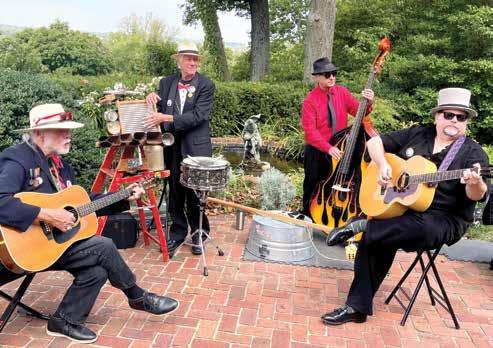
JUG BANDS CELEBRATE RICH LEGACY OF BLACK MUSIC
If you hear the words jug band your first image might be something mountain folks might do or “Emmet Otter’s Jug-band Christmas.” But what you should know is that jug band music is rooted firmly in the legacy of Black people in America, and the first jug band recorded, Clifford Hayes’ Old Southern Jug Band, was from Louisville.
Jug band music is categorized by its use of large earthenware or glass “jugs” as wind instruments.
On Saturday, June 22, Louisville Folk School is partnering with the National Jug Band Jubilee and putting on its Summer Swing, which is a free, family-friendly festival.
The festival will honor the heritage of jug band music featuring performances by Hubby Jenkins (former member of the Grammy Award winning Carolina Chocolate Drops), The Piedmont Blūz Acoustic Duo, the Juggernaut Jug Band, and Tin Can Caravan featuring Thomas Deakin and Stephanie Nilles.
One of jug band music’s strongest supporters, and maybe the man with the most knowledge about jug band music, Michael Jones (yes, former LEO writer Michael Jones), spoke with us about the music and the event.
“So I started reading a lot about the blues as kind of like a morning nostalgia-type thing,” said Jones. “And then one day I walked into Underground Sounds and I was looking through imported used CDs, and there was one called “Clifford Hayes and the Jug
Bands of Louisville.” It was from Austria. And every musician on the CD was Black. And I always thought of jug band music as this white mountain music.
All I knew was The Darlings, ‘Andy Griffith,’ and ‘Emmet Otter’s Jug-Band Christmas.’”
That discovery set Jones on a path to know more. He read the liner notes of the CD and tracked down the writer, Brenda Bogart who was head of the Kentuckiana Blues Society. Jones met with Bogart and her husband, a historian and blues musician.
“That was my introduction to jug bands. I met Steve Drury and Mister Fish from the Juggernaut Jug band.”
After that a series of odd events happened on the road to Jones learning and writing more about jug band music.
“Rod Wenz was the guy who founded Jubilee. He was an ex-public relations executive, and he had started writing some history, and he wanted to collaborate with me because he felt like African Americans needed to explore this because the roots of the music were African American.
“We were going to collaborate, but then Rod died.”
With the loss of Wenz, Jones was determined to keep writing. This time he turned to Drury. But Drury also passed away before they could get into their collaboration. During that time, Jones had his own health woes. Eventually Jones’ work was found by The History Press and they asked him to write a book about jug band music. The book,
BY ERICA RUCKER
“Louisville Jug Music: From Earl McDonald to the National Jubilee” came out in 2014. This is the tenth anniversary of its release.
For years now, Jones has been on the board of the National Jug band Jubilee and celebrates the return of the organization to putting on jug band events. The group has paused events because of the competition with so many other events in the city.
“We’re trying to be a year-round organization now, so it was just too hard in September, just competing against Bourbon and Beyond and all those series of concerts. It made it harder for us to get hotel rooms for our bands, let alone the people who wanted to come to our festival. And then vendors, too.”
“We took the time to discern the best, most sustainable path forward for the organization,” explained Heather Leoncini, president of the National Jug Band Jubilee board in a press release. “In order to keep jug band music on stages in Louisville, we started partnering with other organizations on events. This helped us to broaden our focus beyond one weekend to promoting jug bands year-round.”
Join the National Jug Band Jubilee and Louisville Folk School in celebrating this rich tradition as the Juneteenth holiday passes.
Dave Howard of Louisville Folk School believes this festival is in line with the mission of the school.
“The Louisville Folk School has long admired the National Jug Band Jubilee’s dedication to this vibrant musical tradition,

a tradition we proudly celebrate through our adult group class program, which regularly features jug band ensemble classes,” Howard said in a release. “We are honored to collaborate with them on the upcoming Summer Swing festival. This festival not only promises an afternoon of captivating jug band music but also serves as the culminating celebration for our successful participation in the HeArts program, which has enabled us to offer a variety of engaging classes.”
Summer Swing will take place from 4 p.m. – 9 p.m. in Douglass Park, just outside the Douglass Community Center (2305 Douglass Blvd.).
JUNE 19-JULY 2, 2024 LEO WEEKLY | 13
Photos: l to r (and below) Piedmont Bluz Acoustic Duo Juggernaut Jug Band Hubby Jenkins Courtesy of Summer Swing
BLACK HEALTH MATTERS
In Louisville, as in any city in America, racism is a public health issue.
BY ARIA BACI
Data gathered by the Centers for Disease Control and Prevention shows that Black Americans have higher infant mortality rates, higher hypertension rates, and lower life expectancy. And these outcomes are not genetic. Racism is a public health issue in America.
limiting them from living healthy lives. And that ill health affects the health of our entire culture.
Mountainous research shows that centuries of systemic racism in the U.S. has had a cascade effect on BIPOC communities. Social determinants of health — the non-medical

How It Started Versus How It’s Going
Systemic racism, racism that extends beyond interpersonal engagement between white people and Black, Indigenous, and other people of color (BIPOC) — involves structures, policies, practices, and social norms — that value and devalue people and determine their outcomes, based on their observable genetic characteristics. It goes beyond skin color or hair texture and can include any phenotype deemed inferior within a systemically racist system. In Louisville, like every other city in America, systemic racism is based on a white supremacist worldview. These unfair advantages and unjust disadvantages affect our entire society. Racism negatively affects the mental and physical health of millions of BIPOC people, severely
factors that affect our general well-being, like where we are born, where we learn, where we work, and where we play — are informed by systemic racism. Health inequities among the BIPOC population result in net negative health outcomes. Data continues to show that BIPOC people in America experience higher rates of illness and death as a result of conditions like asthma, diabetes, obesity, and heart disease than white Americans. The life expectancy of Black Americans is still four years less than the life expectancy of white Americans.
The Black Lives Matter movement focuses on the way Black lives are systematically and intentionally targeted for demise. For many BIPOC people, that same racism begins in the delivery room and extends into the convalescent home.
As recently as 2016, Psychology Ph.D candidate Kelly Hoffman led a study at the University of Virginia that interviewed 222 white medical students and residents and found that fifty percent of them believed in biological differences between Black and white people. These differences range from the belief that Black people age more slowly than other races; that Black people’s nerve endings are less sensitive, that their blood coagulates more quickly, and that their skin is thicker than White people. All of these beliefs are false, a startling example of pseudoscience that still permeates the American mindset. What is most distressing in Hoffman’s research is that the respondents were not self-identified neo-Nazis, alt-right activists, or incel conspiracy theorists. These were the earnest beliefs of non-Black students who were aspiring to practice medicine and residents who were already working in medical facilities.
Even when pseudoscientific beliefs are not present, Black health has historically been overlooked in clinical research, both in observational studies and in clinical trials. For example, asthma is the most common chronic disease of children globally, irrespective of race. Vanderbilt University Human Genetics Program alum Marquitta White once published a study that showed that most of the genetic information scientists have on asthma patients does not even apply to Black people. Because the majority of genetic studies are done among populations of European descent, even the longest studies do not include many Black patients. As a result, Black patients are not receiving the best care, because doctors might not know the disease etiology in their population.
The Liberation Health Model
The lack of Black representation in clinical research was part of the impetus for the Liberation Health Model. Dr. Dawn Belkin Martinez, Associate Dean for Equity and Inclusion and a Clinical Professor at Boston University School of Social Work co-created the Liberation Health Model. The Liberation Health model is a theory of human behavior that proposes that health problems cannot be understood in isolation from the historical, social, economic, and cultural conditions that created them. Health care — particularly, in the context of Belkin Martinez’s work, mental health care — for historically marginalized social groups cannot be meaningfully
14 | LEO WEEKLY JUNE 19-JULY 2, 2024
FEATURE The need for Black Professionals in Healthcare is great Adobe Aisha Rucker Rucker
facilitated without that understanding.
The implication is not that only a BIPOC practitioner can effectively treat a BIPOC patient, but rather that understanding the historical inequities experienced by the BIPOC patient is essential for the practitioner. The Liberation Health Model challenges healthcare workers to develop a detailed understanding of the cultural experience of their patients, and to take a social justice approach to compassionate care.
Positives Outcomes on the Horizon
Like any social group, the Black Americans are not a monolithic community. Throughout the West End and across Louisville, there are intersections of social identities and nuances of lived experience that make each life different. But many of the barriers to care among the Black population are the same.
Aisha Rucker, (soon-to-be) Manager of Social Work and Care Continuum at Norton Healthcare speaks from her experiences as a medical social worker. “I believe many of the barriers in the Black community stem from systemic issues such as redlining, food apartheid, poverty, health disparities, and housing inequities,” she says. “I feel that there is a lot of work that needs to be done to create trust in the Black community when it comes to healthcare.”
Rucker enumerates some of the major medical traumas experienced by Black Americans. In the Marion Sims experiments, in which a surgeon from Alabama named Dr. J. Marion Sims conducted a series of experimental operations on enslaved Black women between 1845 and 1849. Manipulating the laws around chattel slavery, he performed unethical experiments on unconsenting women.
In the Tuskegee syphilis study, 399 Black men with syphilis were denied the penicillin that would have healed them. The men were promised free medical care but were never informed of their syphilis diagnosis and were only provided disguised placebos and endured deceptive diagnostic procedures. What was original promised to be a six-month biomedical research study was extended across 40 years and 128 of the participants died of syphilis or complications related to the disease.
In 1951, Henrietta Lacks had samples taken of her own cancerous cells during the course of her diagnosis and treatment.
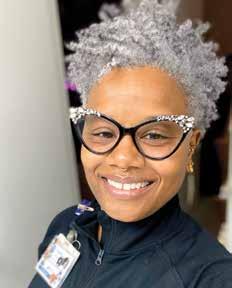
Those samples were given to researchers without Lacks’s knowledge or consent. None of the biotechnology companies that have since profited from the use of her cells ever made any payment to her family. That lack of consent or compensation continued into 2023 when Henrietta Lacks’s family finally received a settlement from Thermo Fisher Scientific.
Despite this history, Rucker says, “I do feel there are organizations and medical offices — for example, Norton West Louisville Hospital and all-Black medical practices like HMPS Internal Medicine of West Louisville that are trying to close the health disparity gaps and build trust in the community.”
Rucker feels that the Black, Brown, and LGBTQ communities in Louisville need “practitioners that really listen, serve with empathy and compassion, free of judgment, and meet these patients where they are.” Her hope is that Norton West Louisville Hospital and practices like HMPS Internal Medicine of West Louisville will help these historically marginalized communities feel more comfortable — and more empowered — in engaging their own healthcare.
To cultivate wellness for all Louisvillians — regardless of race, ethnicity, sex, gender, or socioeconomic status — it is imperative that we come together to confront the systems that created and perpetuated the injustices that cause race-based health inequities. With ongoing this need in mind, Rucker shares a quote from bell hooks: “What we do is more important than what we say or what we say we believe.”

JUNE 19-JULY 2, 2024 LEO WEEKLY | 15
EAT, DRINK AND SEE IN THIS WEEK’S STAFF PICKS

FRIDAY, JUNE 21
Playing 4 Palestine UNICEF Fundraiser
Headliners Music Hall | 1386 Lexington Rd. | headlinerslouisville.com -| $12 adv/$15 door | 3 p.m. | All ages
If you’re one of those people who thinks the local music scene peaked years ago, this fundraiser features nine excellent reasons why you’re wrong. With a lineup consisting of Tabs, White Woolly, Shitfire, Skiptracer, Falling Tree Way, Splice, Requiem, Fuzzy Worms, and Mammoth, this is a showcase of some of the best music that the current Louisville music scene has to offer, and features an excellent mix of punk, jazz, garage rock, psychedelic, indie, and everything in between. General admission standing room only, (limited seating available on a first come, first serve basis), with all profits going to UNICEF/Stop Genocide.
—Jeff Polk
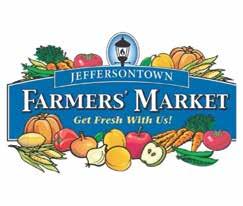
SATURDAY, JUNE 22
Jeffersontown Farmers’ Market
Jeffersontown Farmers’ Market Pavilion | 10434 Watterson Trail | jeffersontownky. com | Free to browse | 8 a.m.
The city of Jeffesontown is hosting its Farmers’ Market every Saturday for those who want to pick out some fresh fruits and vegetables. Enjoy produce grown locally, or pick up some flowers or baked goods each weekend.
—Caleb Stultz

FRIDAY, JUNE 21
Joseph and the Amazing Technicolor Dreamcoat
Iroquois Ampitheater | 1080 Ampitheater Rd. | tickets-center.com | $19+ | 7:30 p.m.
ACT Louisville is set to present Joseph and the Amazing Technicolor Dreamcoat for a few more days at the Iroquois Ampitheater. The all ages event will go on rain or shine. However, showrunners ask that patrons do not bring in outside food or beverages to the show.
—Caleb Stultz

FRIDAY, JUNE 21
Funk Fest
Great Lawn | 231 Witherspoon St. | ourwaterfront.org | $45+ | 5 p.m.
Funk Fest, a national tour of artists from all across the country, is headed back to Derby City for this upcoming weekend. Hip hop heads can enjoy two days of classics from Jeezy Boosie and Scarface Too $hort on Friday and acts like Charlie Wilson and Marsha Ambrosius on Saturday for hours of live tunes.
—Caleb Stultz
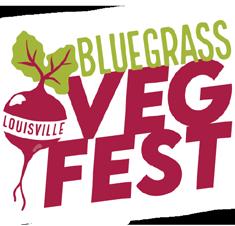
SATURDAY, JUNE 22
Bluegrass VegFest
Mellwood Art Center | 1860 Mellwood Ave. | bluegrassvegfest.com | 12:00 p.m. | Free
The day-long Bluegrass VegFest celebrates vegetarian and vegan cuisine with plant-based menus from 17 restaurants and food trucks. Of course, there will be a strong presence of local food, from Abol’s Café, Cosmic Bird, Half Peach, Spinelli’s Pizza, and V-Grits, but this year will also welcome out-of-state guests Branch Out Foods from Paducah, That Vegan Joint from Indianapolis, and Oh My Cod Vegan Seafood all the way from Florida.
— Aria Baci

SATURDAY, JUNE 22
Wurst Fest
German-American Club | 1840 Lincoln Ave | Search Facebook | 2 – 11 p.m. | Free with food for purchase
Yep, it’s a sausage fest but get your mind out of the gutter, this festival is a celebration of this favorite German food. From the tiny sausage to the average to the big ones… this festival promises something for everyone. Oh yes, there will be live music and face painting for the kids. This is a family-friendly event.
—Erica Rucker
16 | LEO WEEKLY JUNE 19-JULY 2, 2024

SATURDAY, JUNE 22
Terry Harper Presents: HANNAN Last Disguise CD Release
Headliners Music Hall | 1386 Lexington Rd. | headlinerslouisville.com | $10 adv/$15 door | 8 p.m. | All ages
HANNAN’s latest full-length album Last Disguise, (which was reviewed in LEO back in February of this year), is finally getting a proper release show. Regarding the album, this is what we had to say; “HANNAN is one of those rare bands that click on every level. The musicianship, the songwriting, everything here is just flat out astounding. This is the perfect mix of hard rock, modern rock, and alt-rock, all wrapped up in one big groove-oriented, riff-driven package.” The band also puts on one hell of a great live show, so this is one you’re not gonna want to miss. And with Sigmatic, Sweet Lady, and Boozer also on the bill, this show is absolutely stacked with talent!
—Jeff Polk
SUNDAY, JUNE 23
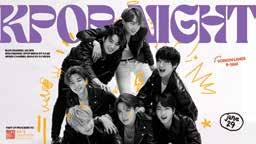
SATURDAY, JUNE 29
Kpop Silent Disco
Vernon Lanes | 1575 Story Ave. | Search Eventbrite | 9 p.m. – 1 a.m. | $10
Let’s start by saying, one channel of the silent disco headset is ALL BTS. For those celebrating the return of one of the seven members from military service, you’ll be in heaven. For all other Kpop fans, there will be two more channels playing lots of your other favorites. If you’ve never done silent disco, you’re in for a treat. A portion of the proceeds will benefit the Asia Institute - Crane House
—Erica Rucker
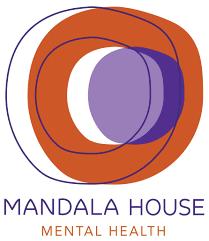
Be You Block Party
Mandala House | 000 Address | mandalalouisville. com | 4:30 p.m. | Free
This family-friendly Pride event is unique for two reasons: Pride events are often adults only, starting later in the day and offering bar service, but the Be You Festival welcomes queer youth for a daylight party. This free event also centers BIPOC trans youth, welcoming for a full spectrum of intersectional identities. Mandala House in the Highlands will cultivate a safe, inclusive ,and engaging space that celebrates wellbeing of LGBTQ youth.
— Aria Baci

WEDNESDAY, JUNE 26
The Legend of Gourdface
Floyd Theater | 2100 S. Floyd St. | instagram. com/gourdfaceshortfilm | 6:30 p.m. | Free
Whether you identify as a cinephile or just a casual viewer, any chance to support a local filmmakers is a chance to support both local arts and local business. This short film co-directed by a romantic couple who went to UofL together pays homage to their childhood horror favorites like “Goosebumps” and “Are You Afraid of the Dark?” The audience is encouraged to dress their Halloweeen best for this spooky summer screening.
— Aria Baci
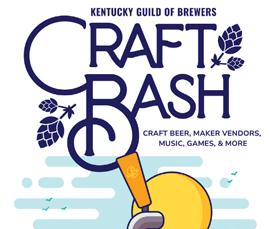
SATURDAY, JUNE 29
2024 Kentucky Craft Bash
Louisville Waterfront Park | 231 Witherspoon Ave. | kycraftbash.com | $65 VIP/$55 general admission/$10 designated driver | 1 p.m. | 21 and older
Bourbon obviously rules this state, but on Saturday, June 29th, craft beer becomes king for a day when the Kentucky Guild of Brewers hosts their seventh annual fundraiser: the Kentucky Craft Bash! This Kentucky-only beer festival features over 50 breweries from all across the Commonwealth pouring more than 150 different varieties of beer, as well as a variety of cider, mead, sake, and more. Also featured are a “Women in Beer” booth highlighting female brewers, vendors, games, and food trucks.
—Jeff Polk

SATURDAY, JUNE 29
Parker Gispert with Jason Rivers
The Monarch | 1318 Bardstown Rd. | Search Facebook | Doors at 7 p.m./ Show at 8 p.m. | BYOB+Donation
Former singer of The Whigs, will perform music from throughout his career and his current solo album, Golden Years. Joining the show will be Jason Rivers, singer of local act Drift City. Drift City will release an EP this summer titled, Sky Unconscious. The show is a BYOB event with artists asking for donations.
—Erica Rucker
JUNE 19-JULY 2, 2024 LEO WEEKLY | 17 STAFF PICKS
COMING HOME WITH KNOCKED LOOSE
BY BRYCE RUSSELL


Louisville’s own metalcore / hardcore punk band Knocked Loose played three hometown shows at Portal on Thursday, June 13, and then at Old Forester’s Paristown Hall on Friday, June 14, and Saturday, June 15. Featuring Bryan Garris on lead vocals, Isaac Hale on lead guitar, Nicko Calderon on rhythm guitar, Kevin Otten on bass, and Kevin Kaine on drums. The band brought their heavy and fierce sound back home for what was two nights of unforgettable, beautiful chaos to celebrate the release of their third and latest album, You Won’t Go Before You’re Supposed To Louisville and its surrounding area have always had an electric and vibrant alternative and punk rock scene since the late 1970s, and Knocked Loose has been carrying the torch as one of the city’s most popular groups since their inception in 2013, and the release of their first album in 2016, Laugh Tracks
A mix between metalcore and hardcore, the band brings aggressive and death metal-esque vocals, with weighty and riff-heavy guitar and bass and fast and thunderous drums. With artists like Slipknot, Slayer, Lizzy Borden, and Job for a Cowboy among their influences, Knocked Loose can grab the attention and praise of both young and old hardcore/ metalcore fans alike. Along with other bands like Code Orange and Jesus Piece, the band
is considered one of the most important acts of the late 2010’s metalcore revival, bringing many younger music fans into the genre. Part of the Knocked Loose appeal has been their ability to crossover into the mainstream, having played festivals like Bonnaroo and Coachella, which racked up hundreds of thousands of views each online. Pulling fans from the mainstream through their creative songwriting that stretches outside of metalcore and hardcore, engages with fans who may not have listened to those genres otherwise. They have said in the past that their goal is to put hardcore in front of as many new listeners as possible, and they are well on their way to becoming one of the most successful acts to do that.
While expanding on past projects, the band’s new album adds tracks with a slightly more melodic approach, but without compromising their hardcore roots and feel, keeping that raw, anguished emotion that makes Knocked Loose special — in some cases, even going the opposite way, adding even more dissonant sounds on some tracks. This new album is a definite evolution of their sound, though without getting rid of those genre-classic breakdowns and leaving crowds plenty of furious vocals and thick guitar riffs to mosh and slam to.
18 | LEO WEEKLY JUNE 19-JULY 2, 2024 MUSIC
Knocked Loose
Courtesy Photo
RAILBIRD MUSIC FESTIVAL REVIEW
A Weekend Of Refined Americana In Lexington
BY SYDNEY CATINNA

When it comes to music festivals, Lexington’s Railbird was a breath of fresh air full of both acts I already loved as well as new music to discover.
I don’t know what kind of music festivals you’ve been to, but never before have I been to one where every single person who squeezed past me stopped to say excuse me. Whether that speaks to the manners and hospitality of the near-South or perhaps the smaller size of the festival, either way, it added to a very nice overall experience.
Like many Millenials, I attended a slew of massive, chaotic festivals in my twenties. Bonnaroo’s campground, Forecastle’s late night boat shows, and Coachella’s afterparties have left me with hazy memories of both the fun nights I enjoyed and the inevitable exhaustion that followed.
So, now, a little older, but probably not much wiser, the decision to commit to a weekend-long music festival is not one I take lightly, especially when it requires me to leave Louisville. I ultimately decided to go, partly thanks to my obsession with Hozier’s Too Sweet, and I’m happy to say that even the rain couldn’t sour the experience.
Overview
Railbird was a two-day festival with three stages and 16 acts per day. Each day clearly drew two distinct crowds. Saturday’s headliner, Noah Kahan brought in a younger audience where a sea of kids in bucket hats sang along to every word. Sunday’s performances from Hozier and
Chris Stapleton attracted an older, larger (and muddier) crowd.
Despite a beautiful lead up week, the weekend saw cloudy, overcast weather with a light drizzle Saturday and a few short, heavy downpours on Sunday.
Overall, the event had a relaxed, refined Americana vibe, the exact size, scale and style I’d expect at a music festival set in Lexington. The hospitable crowd made up for the rainy weather which made a muddy mess of what would have otherwise been a lovely venue. Food and drink prices were as sky high as you’d expect, but when it came to alcoholic beverages, I was surprised by the limited selection. With some pretty clean porta potties (aside from Sunday’s mud, of course), Railbird certainly had the least amount of drugs and debauchery I’ve ever seen at a music festival. Whether you consider that a positive or a negative might tell you if Railbird is the right experience for you.
The Music
Over the years, many of my favorite festivals have seemed to change in terms of the style of music represented. Sometimes they try to go so broad that they lose their original identity. However, what struck me most about Railbird – from both the artists I was already familiar with and the new sounds I heard throughout the weekend – was how perfectly curated the lineup was. Every artist at Railbird was either a Kentucky native or sounded like they could be. There were locals like Chris Stapleton and
second-oldest harness racing track in the world. Its second year at the new venue, Railbird seemed to have a functional layout for vendors, plenty of shade and more than enough hydration stations. While bathroom lines could get pretty long, there was never too much of a wait for food or drinks.
Artist merch was joined by a large tent of vintage vendors, a new addition to the growing festival.
After Sunday’s mid-day downpour, a circular area – presumably where the track normally is – dissolved into a river of mud, meaning that any trip to the bathroom or bar required a careful treading across an increasingly wetter and muddier slush pool in which many shoes were sacrificed.
While any venue that mixes rain and a crowd of over 40,000 would struggle, I hope they’re better equipped with ground cover in the case that it should happen again.
The Food & Drinks
Wynonna Judd, as well as regional neighbors like Josiah Leming of Josiah and the Bonnevilles who grew up in Morristown, Tennessee. Plus, Elle King who, despite being born in Los Angeles to Rob Schneider, was raised in Ohio.
I loved how the core of the musical selections was rooted in Bluegrass, but the style was so modern that much of it could be passed off as Pop or Country.
Fiddles, banjos, and violins were present in almost every set, complementing mainstream sensations like in Noah Kahan’s outro to the folk-pop hit “Stick Season.” At Railbird, you could find everything from tried-and-true Bluegrass to its distant cousins ranging from singer-songwriter styles, rock-country hybrids, and catchy pop melodies.
I was thrilled to see Trampled by Turtles, a hard, fast, punkesque Bluegrass sensation I discovered at Waterfront Wednesday almost a decade ago. I also discovered new acts like the unsigned Josiah and the Bonnevilles as well as Red Clay Strays’ unique brand of Southern rockabilly that’s easy to dance to.
The highlight of it all was discovering why my 21-year-old cousins are so obsessed with Noah Kahan. His music is both catchy, profound and striking with lyrics, harmonies, abrupt rhythmic shift, and instrumentation that compounds to make you feel everything from devastated to elated all at the same time. Noah, I love you.
The Venue Railbird was held at Redmile Racetrack, the
Over a dozen food vendors served up everything from Asian street food to hot dogs, tacos, and chicken fingers in the area opposite the main stage. There were traveling festival-focused vendors like Hippie Dips, serving fresh salads and healthy grub as well as local operations like Chaotic Coffee and Ole Kentucky Kettle Corn. There was quite a bit of Mexican and hot dogs, but you could really find just about any type of food you wanted here.
I was pleased to see two Louisville vendors with both Four Pegs and Red Top Dogs present at the event.
When it comes to the beverage options, I have to admit I was a little disappointed. Billed as a weekend of ‘music, equine and bourbon,’ I expected more of a selection, but maybe I’ve been conditioned by Bourbon & Beyond. I certainly appreciated the effort put into the Bourbon Hideout where you could lounge on shaded velvet couches and shop merch from Kentucky for Kentucky (the retailers at The Kentucky Fun Mall aka home of the taxidermied Cocaine Bear).
There were only two cocktails to choose from: Ale 8 and bourbon or lemonade, ginger ale and bourbon, as well as four bourbon brands to choose between. These included Chris Stapleton’s Traveller as well as Four Roses and Owensboro’s Green River Distilling. Justin’s House of Bourbon was also on site selling single barrel tastings.
Cocktails or tastings were priced by the ounce. A half ounce cost $15 and a full ounce cost $28.
The rest of the options were slim and included Bud Light, White Claw, and a handful of selections from West Sixth Brewing.
Railbird set drew
the largest crowds of the weekend
JUNE 19-JULY 2, 2024 LEO WEEKLY | 19
REVIEW
Hozier’s
one of
Nathan Zucker
DRONE AND MARIMBA WITH MATCHESS
BY BRYCE RUSSELL
Whitney Johnson, also known by the name of the ongoing drone/noise project Matchess, brought the signature haunting, ethereal music to Louisville on Monday, June 10. Before the fantastic set, filled with droning synths, echoing vocals, and dissonant viola, LEO was able to sit down with Johnson for a short interview about influences, current tour, and upcoming projects.
LEO: To start, could you give me a quick overview of your musical past?
Whitney Johnson: Yeah, I played a little bit of piano/keyboard. I actually played keyboard when I was very little. We didn’t have a piano so it was just this keyboard that only played two notes at a time, so by the time I got to music that required more than two notes, I had to quit piano lessons. I picked up viola when I was about 10 years old in school, because our school had orchestra. It was really nice, I’m really thankful for that school orchestra.
LEO: When did you start doing this sort of very experimental, overlay-heavy type of music?
This project [Matchess] started in 2009, but I didn’t actually play a live show until 2011. So that was mostly [about] a year and a half of recording, getting it together, kind of figuring out what the music was. I put together a couple of tapes, mostly just writing songs. Then live started in 2011.
LEO: What artists have been most influential in your latest projects?
So many. I have two records that are coming out this September. I just got the release date, September 27, and they are by two artists. One is by Whitney Johnson, the other is by Matchess. The Whitney Johnson LP is inspired by this musician Deuter, who is this German Krautrock musician. He made some recordings for the Rajneeshis and for Osho, and there is one that’s music for a shaking meditation, and it uses this sort of keyed percussion, and that was so inspiring for me. I’ve never played keyed percussion, and so I’ve gotten into the marimba. I’m playing some marimba music [now] and it’s so much fun. I’m not a marimbaist, I’ve never played that kind of instrument, but I just fell in love with the sound. [The combination of] the wooden keys and then metal resonators, the combination of those different elements are just so magical to me.
LEO: What artists have been influential

for Matchess, that sort of ethereal, drone sound?
That just goes in so many directions. I feel like the sound is very soupy and has so many layers. It could be muddy, some could say, but that goes the same for the influences leading to it. They’re all very soupy and a mess of different things. When I was getting started, I was listening to Grouper a lot, Liz Harris’s music.
LEO: What pieces are you most proud of, specific songs or albums?
In general, I love the record The Rafter , because it was so direct. It came from a place where I was just going through a real transformation in my life, but it was a difficult time. It just came out of me so quickly. Other records have been very crafted, very slow, and kind of meticulous. [The Rafter] came in a few weeks, and it felt so direct and unedited. Sort of first thought, best thought approach. I love that record.
LEO: Your music has a very atmospheric and cinematic feel to it. Have you ever scored any films or thought about doing that? I have done stuff with other projects, but with [Matchess] I haven’t exactly scored any films, but I made this record Sonescent that just came out in 2022, and the filmmaker
another collaborator, Jenny Pulse, is going to play with us going West. Haley is doing both though. It’s going to be a real treat to collaborate again with her in a new context. Lula is a sound artist that does such great work with texture and voice, and so I reached out and just asked if she wanted to join the tour going East, and I think it works really well. They mostly use synthesis, voice processing, but then also computer music and Max/MSP programming, so a lot of that stuff is really a good component with the organic/acoustic sound of marimba, viola, and voices in general. There’s a lot more high frequency, sort of crunchy information that Lula is contributing that’s a really nice [mix] with the more muddy, mid-lows that I’m obsessed with. I’m always in the mid-low range and it gets pretty thick, so it’s nice to lighten [the sound up] with her.
Debra Stratman just contacted me and asked if she could use some of my music in her film. I was so honored because she had so many other amazing artists that she had contacted, and she used a section of [Sonescent]. It’s all about the sort of geological history of the planet, but then also of the cosmos. It’s very macro to micro, and abstract, but mostly about geology. The slow movement of rocks through time connected to that record for me, and I guess for her too.
LEO: You are touring with two other artists, Haley Fohr and Lula Asplund, can you tell me a little about them and how working with them has been?
Playing with them has just been a dream. In the first place, with Haley, I’ve been playing with her for probably 10 years, playing viola in her project [Circuit des Yeux]. We’ve done other collaborations as well, but I’ve been playing in Circuit des Yeux for a long time in different contexts, sometimes just touring, sometimes just recording. We’re almost sisters at this point, so it was very fun to flip it around and ask her to play with me for a summer. We’re doing two different tours, 28 dates total that we are doing in this trio format, but with two different trios. Lula is going to play with us on this first [half], the East Coast trip, and then
LEO: You mentioned you have two albums coming out, could you tell me about those? So, Hav is the LP by Whitney Johnson and then Stena is the cassette by Matchess. It’s more of a noise tap, it’s very collaged, sort of in the style of past Matchess records, but it has more songs and more lyrical information. It also has more field recordings and more sort of hodgepodge, angular changes that move between sections, also these references that are made to sounds on other records, so it’s this sort of internally referential system. Then Hav is very much its own thing. It’s just instrumental and has no voice at all, and it’s only five instruments, being sine waves programmed in Max/MSP, viola, marimba, halldorophone, and synthesizer that’s sequenced. It’s much more composed and direct, sort of like “here’s the map, here’s the directions.” It’s much more clean sounding, more open and spacious.
LEO: This tour is pretty long. Are there any cities you are most excited about getting to play in?
That’s hard to say, but one that comes to mind is — at the end of the trip —we are going to be playing San Juan Island off the coast of Washington in this Geodesic dome on the island called the Alchemy Arts Center.
LEO: Final question, where does the name Matchess come from?
It comes from many places, the most direct though is from the Chicago Reader, an alt-weekly, and they had a section called The Matches Section that was personal ads and I used some text from that and some personal ads for lyrics way early on, back in 2009. Where the extra “s” comes from I have no idea, though.
20 | LEO WEEKLY JUNE 19-JULY 2, 2024
Q & A
Matchess Photo tktk
FOOD & DRINK
KIWAMI BRINGS THE ULTIMATE RAMEN
BY ROBIN GARR
Louisville seems to be having a ramen renaissance right now, and I am here for it.
Yes. we’ve had access to genuine ramen that didn’t come from a cheap supermarket packet for a while. Of course you can still get your ramen fix at full-service Japanese and other Asian restaurants. And we’re not even talking about all the tasty Vietnamese pho and Thai yum, which are delicious soups-as-a-meal too but entirely different.
But there’s no substitute for those memorable places where the chefs treat ramen as a calling, a spiritual experience that must be done properly and consumed with respect but quickly, before the broth cools.
“Spicy, steaming, slurpy ramen might

be everyone’s favorite Japanese food,” Yuri Kageyama wrote in an Associated Press World News report. “In Tokyo, long lines circle around blocks, and waiting an hour for your ramen is normal. What awaits might be just a dive, but a hot bowl of ramen rarely fails to hit the spot.”
That’s ramen. It does hit the spot, and as Marie Kondo might say, it sparks joy. Ramen is about joy, and we’re starting to see a little burst of ramen houses popping up all over.
Joining Ramen House, in place since 2019 adjacent to Baxter Avenue Theaters. Hokkaido Ramen is new in Colonial Gardens. Renshoku Ramen was building a sterling reputation in Old Louisville until it was forced to close last after a car smashed into a tree out front, starting a fire that killed the driver and badly damaged Renshoku’s building. Repairs are
under way, and if you’d like to help, they’re inviting friends to support the cause by purchasing digital gift cards.
And now there’s Kiwami Ramen, recently arrived in the Highlands space that housed Wild Ginger and, before that, Cafe Metro.
Kiwami means “ultimate” or “extreme” in Japanese, and after inhaling a couple of outstanding ramens and compelling apps, I’ll go along with that.
We went by for lunch on a Saturday, figuring we’d enjoy a quiet scene. Does the Highlands even wake up that early on the weekend?
Ha! Yes, the Highlands does. The large, L-shaped venue was just about full. With its high ceilings and hard surfaces, it was one of


the loudest lunches I’ve had lately.
Kiwami is a new entry in a tiny but growing chain under Master Chef Tani-san, who, its website assures us, “is bringing the essence of genuine Japanese soul food to the neighborhood community.”
With shops in Tucson, Arizona, and Laredo, Texas, and another coming soon in McAllen, Texas, the Louisville branch earns the unexpected status of being Kiwami’s only location not on the U.S.-Mexico border. Go figure.
The menu, printed on a shiny black two-sided card, offers nine ramen options priced from $12.95 to $16.95, plus a variety of optional extra toppings. Nine bowls, including poke bowls, curries, and other goodies, range in price from $9.95 to $21.95. You may also choose from a dozen Japanese appetizers from $5.95 to $15.95.
Kiwami Ramen
1700 Bardstown Road
384-6412
kiwami-ramenbar.com
facebook.com/KiwamiRamenLouisville instagram.com/kiwamiramenbar
We started with a bowl of edamame ($5.95) and chose the spicy option ($1). I’m glad I did. Edamame makes a pleasant bar snack, but this spicy version adds serious fire – a dollop of chili crisp, I believe – that makes it really hard to resist.
A half-dozen potsticker-style gyoza ($9.45 for either pork- or veggie-stuffed) made another tempting appetizer. Wrapped in pale-green kale-pastry wrappers and grilled crispy brown on one side, they were sizzling hot and filled with cooked and mashed puree of mixed veggies, with a sweet-hot dipping sauce on the side.
Then came the ramen. Most of Kiwami’s offerings are built on long-simmered pork shio or shiro broth, a traditional Japanese style that’s light in color, in contrast with soy-dark shoyu ramen.
Kiwami shiro ($15.95), a signature dish, came out steaming hot, almost filling a large black bowl. It lofted up an intriguing, appetizing scent that was hard to describe. Meaty and umami come to mind, and something earthy that reminded us of black truffle. A mass of ramen noodles was piled like an island in a brothy ocean, only its top poking up. Around this perched half of a soft-boiled shoyu egg, a row of thin-sliced grilled chashu pork, kikurage mushroom slivers, bamboo shoots and ground pork, Thin-sliced scallion threads made a pretty garnish.
The only meatless ramen option, vegetable ramen ($14.95), looked surprising at first: Fresh and very fine mixed lettuces had been piled on top, making the dish look like a big dinner salad with a lemon wedge tucked on the side. It was the real thing, though: Stir the lettuce into the rich, lightly salty veggie broth so it wilts down, and you find plenty of avocado and a few broccoli florets nestled in soft, flavorful kale noodles. It felt healthy, and it was very good. Our meal for two was flawless, and service was quick and friendly. Our tab came to $47.30, plus a 22 percent tip entered on the card reader.
Noise Level: A happy near-capacity crowd elevated the sound level to a conversationcrushing roar, with average levels at 78.4 dB and peaks to a near-painful 92.2 dB.
Accessibility: The restaurant and restrooms appear accessible to unassisted wheelchair users, with the exception of seats at the bar.
JUNE 19-JULY 2, 2024 LEO WEEKLY | 21
Clockwise from Left: Kiwami shiro ramen, a specialty, is a classic Japanese style made with long-simmered lightcolor broth in place of the standard dark soy-based version. The veggie-stuffed version of Gyoza – Japanese potstickers – come loaded with goodies and wrapped in pale-green kale pastry.
If you think edamame are just a bar snack that keeps your hands and palate mindlessly busy, you haven’t tried Kiwami’s spicy version.
Robin Garr
SUMMER DINING GUIDE
Thirteen local spots that are sure to satisfy
BY SYDNEY CATINNA
Paseo
900 Baxter Ave.
Paseo, the restaurant at the new Myriad Hotel on Baxter Avenue, describes itself as a “metropolitan-style restaurant bursting with Mediterranean spice and scenery.” Famous for its seafood paella and poolside views, this spot is perfect for all occasions: brunch, lunch, dinner, and everything in between! Grab a $ 10-weekday pool pass in the summer and sip on cocktails and snack on appetizers in this hidden Highlands oasis.
MeeshMeesh
636 E. Market St.
MeeshMeesh is Noam Bilitzer’s popular Levantfocused Mediterranean restaurant in Nulu. All main dishes come with salatim, which is Hebrew for “salads’’ but much more interesting. Small dishes of varied condiments circle around two thick, tender fresh pitas imported from Brooklyn’s famous Greens Bakery. Salatim dishes included smooth, creamy hummus, caraway-scented crisp apple, and cabbage slaw, spicy olives and pickles, and so much more.
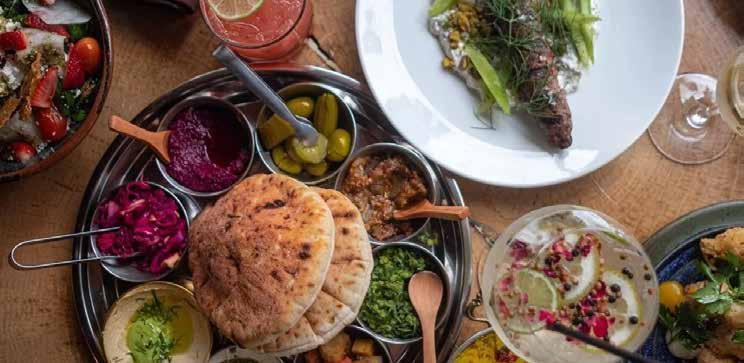
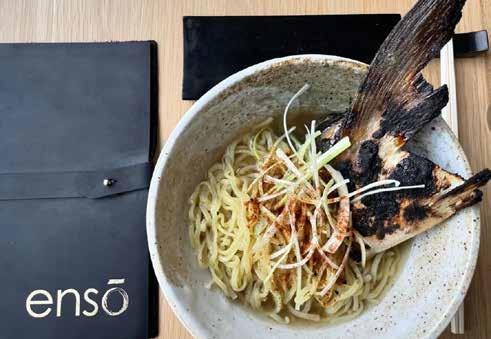
Enso
1756 Frankfort Ave
Enso is a new concept from the James Beard nominated chef behind North of Bourbon with a lovely patio on Frankfort Avenue. The menu interlinks Japanese and Southern culture to create thoughtful and authentic dishes that are a unique addition to the Louisville food scene. Your meal will begin with a hot hand towel and a cleansing cup of chicken broth before you order any of your shareable plates from the raw bar or unique ramen with housemade Udon noodles.
HopAtomica
1318 McHenry St.
New micro-brewery, distillery, and wood-fired eatery HopAtomica is now open with a selection of appetizers, pizza, sandwiches, salads, and desserts. Everything at this new Germantown spot is made in-house, including beer and spirits. Enjoy cocktails in the Biergarten or inside where their large windows let in the summer breeze.
Cosmic Bird
619 Baxter Ave.
A trained chef with 20 years of experience, James Morier opened Cosmic Bird with high hopes that his plant-based chk’n sandwiches and upcoming vegan sushi Sundays will be a game changer for the Louisville food scene. Their back patio is now open for business and filled with live music and a small garden.
Decade
11076 E Washington St.
Decade is home to a whole lot of Louisville history. Opened by the previous owners of Decca, this neighborhood eatery with fresh food and craft cocktails is located in the space that once housed Butchertown Grocery. Stop by during the next Summer Guest Chef Series event on July 25th for a menu by Kathy Cary, former chef/owner of Lilly’s Bistro, and a seventime James Beard Awards nominee.
Le Relais
2817 Taylorsville Rd.
A classic French restaurant at Bowman Fields, Le Relais has always been an incredible place for an elegant dinner, but now you can enjoy lunch and brunch there as well! The interior
22 | LEO WEEKLY JUNE 19-JULY 2, 2024
Courtesy Photo Enso Courtesy Photo FOOD & DRINK
MeeshMeesh
is timelessly curated with vintage French aviation ads, but their back patio is what really shines in the summertime where you can watch planes quietly come and go while enjoying a souffle or croque monsieur.
The MerryWeather
1101 Lydia St.
This Schnitzelburg staple hosts regular pop-ups from local favorites like Lou Oyster Cult and vegan-focused Shahar Cafe. Head to their patio and try a Pandan Painkiller made with coconut-washed Roku gin, Genepy, aged white rum, pandan, coconut cream, coconut milk, pineapple, and orange.
Kiwami Ramen
1700 Bardstown Rd.
Kiwami Ramen is now open on Bardstown Road. The Japanese-style ramen house serves 9 different types of ramen, including Kentucky’s only dippable ramen. Their menu includes both vegan and vegetarian-friendly options as well as poke bowls, fried rice, alcoholic beverages, and boba tea. With 25 years of experience, Kiwami’s Master Chef Tani-san is bringing the essence of genuine Japanese soul food to the neighborhood community. Tanisan has previously operated successful ramen stores in Japan, New York, and Houston.
Garage Bar
700 E Market St.
This Nulu hotspot is well-known for its brick-oven pies, best enjoyed on its large, sunny patio. This large outdoor space is filled with games, seating, and of course, the crashed cars they’re best known for. What’s more? They’ve recently begun offering a late-night menu featuring hot dogs, burgers, and other bar staples!
Harvey’s
2011 Frankfort Ave.
This Aussie-owned specialty cheese shop and restaurant belongs on every summer bucket list. Enjoy charcuterie and spritz on their patio or dine indoors and munch on dishes like their black garlic ricotta gnocchi. Don’t forget to swing by for a weekend lunch featuring Harvey’s classico toastie, a hefty creation that a plain grilled cheese only wishes it could be.
Falls City Market
400 S 2nd St.
Looking for a lunch or happy hour spot that can appease a picky group? Head to Falls City market at The Omni. Home to local favorites such as Heine Bros. Coffee, Con Huevos Craves, I Love Tacos, Country Boy Brewing, and a Castle
& Key outpost, there’s enough variety here to satisfy a range of preferences.
Haymarket
3020 River Rd.
Home to a large, well-manicured outdoor
space with plenty of shade, Haymarket is the perfect place to work remotely. This grocery store sells fresh produce, frozen meals, pressed juice, and more, but also includes a sandwich shop and coffee outpost. They’ve got everything you need for an easy transition from morning to afternoon.
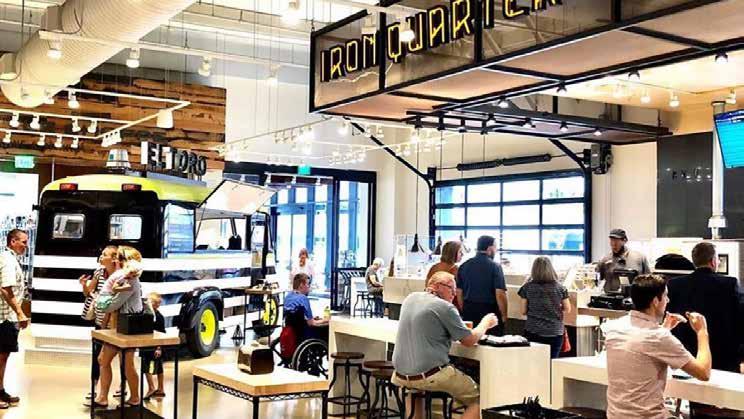

JUNE 19-JULY 2, 2024 LEO WEEKLY | 23
Falls City Market
Courtesy Photo
Paseo
Courtesy Photo








J ' T O W N 1 0 1 1 7 T a y l o r s v i l l e R d . 5 0 2 - 2 9 0 - 6 0 4 9 Woman Owned, Human Led. Powered by Plants & Fun! C L A R K S V I L L E , I N 1 4 0 0 M a i n S t . # 1 1 2 B o l t + T i e B u i l d i n g 8 1 2 - 5 5 7 - 6 5 5 0 H I G H L A N D S 1 9 0 6 B a r d s t o w n R d . 5 0 2 - 4 0 9 - 9 4 1 0 SELLING FUN CANNABIS PRODUCTS FOR THE CANNABIS COMMUNITY ALL SUMMER LONG!
MILTON METZ REMEMBERED IN YOUTUBE ARCHIVE
BY ERICA RUCKER

Milton Metz, “El Metzo,” is being remembered by his family with an archive on YouTube.
Who is Milton Metz?
Well, for over 60 years, Metz was one of the most recognizable voices in Louisville radio and TV. He did many interviews for WHAS throughout his career but also narrated Talking Books for the American Printing House for the Blind. He hosted one of the first call-in radio stations, maybe even before Larry King who technically began his show the year before Metz but whether or not he took calls on air is debatable. “Metz Here” was available in over 40 states and in parts of Canada.
Throughout his career Metz interviewed Louisville greats including Muhammad Ali, Ned Beatty, and Foster Brooks.. He also interviewed many national stars as well including Richard Roundtree (“Shaft”),
Metz, himself, was interviewed by LEO Founder, John Yarmuth, in the ‘90s.
When he passed in 2017, his son Perry Metz, inherited the many recordings of his father’s work.
“Milt did celebrity interviews for years at the Derby,” Metz said in an email to LEO. “So much so that people would feed him tips about who was hosting whom. He was able to find people that no one else was interviewing.”
So far, the YouTube channel has more than 250,000 views and new videos will continue to be shared throughout 2024.
“He loved doing this because you had to

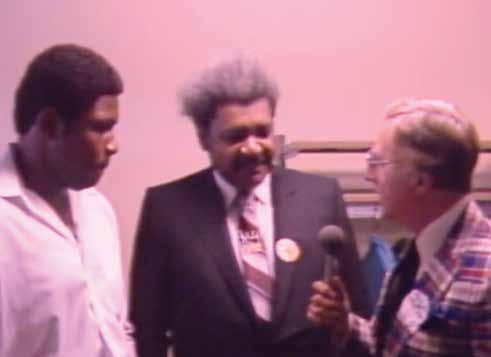
know a little bit about everybody and be ready to switch gears at a moment’s notice when you found a star,” said Metz.
During the span of his career, Metz did a “little bit of everything,” according to his son. “That included announcing, weatherman, villain on T-Bar-V, news, phone-in program, TV Host, sports, commentaries, and celebrity interviews.”
Metz was born in Cleveland, Ohio in 1921. Throughout his career he didn’t speak much about himself or his age but according to his Wikipedia page, In 1993, he told Courier Journal columnist Tom Dorsey about his age. Sort of.
“Let’s just say I’m older than Diane Sawyer and younger than Mike Wallace,” said the elder Metz. At the time Mike Wallace was 75.
JUNE 19-JULY 2, 2024 LEO WEEKLY | 25
ARTS & ENTERTAINMENT
Metz interviewing Akira Endo (former Louisville Orchestra conductor)
Metz being interviewed by John Yarmut
Metz interviewing boxer Greg Page (Louisville) and infamous promoter Don King YouTube
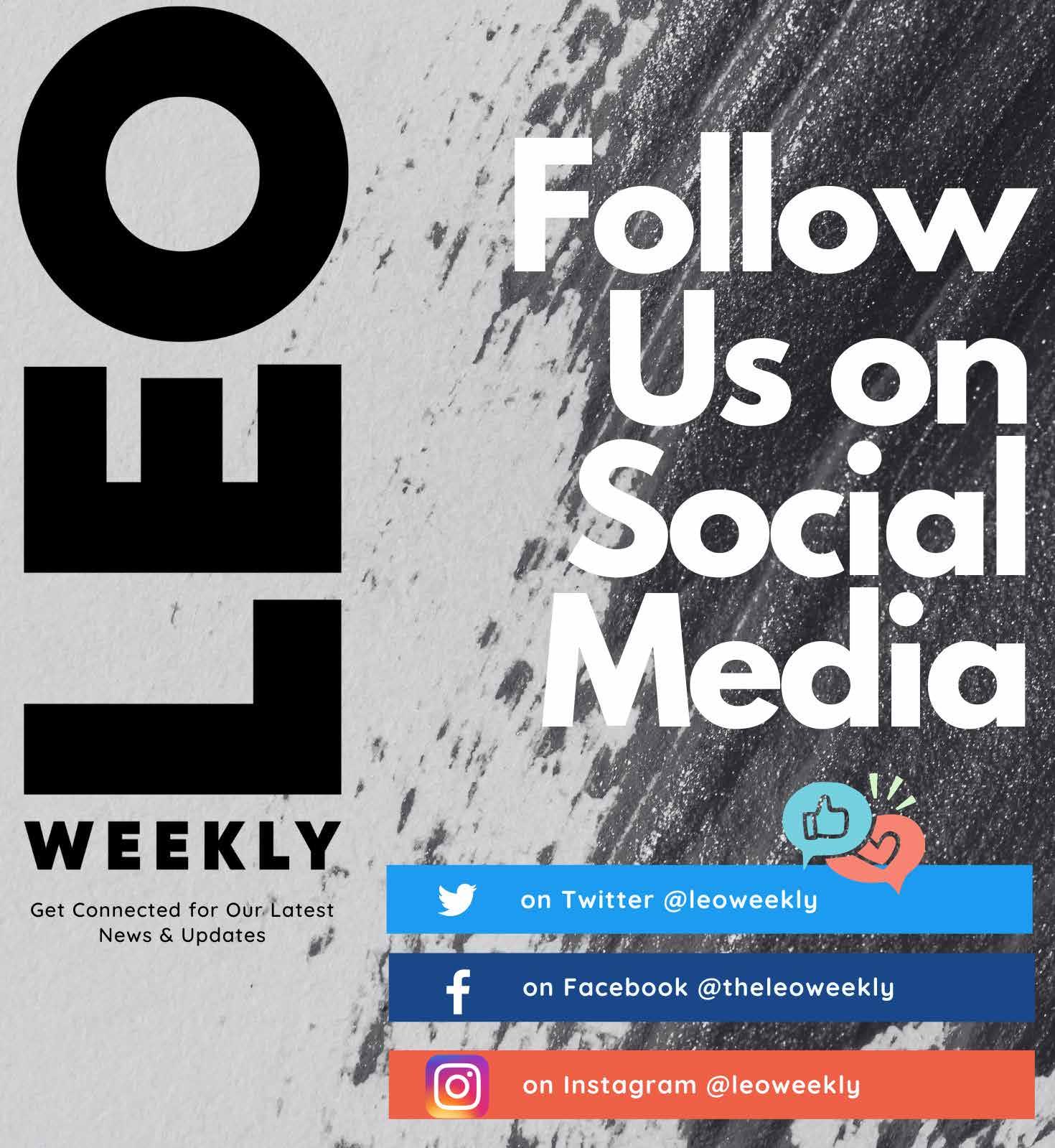
26 | LEO WEEKLY JUNE 19-JULY 2, 2024
TRACY LIKES THIS ONE
British Black Film at the Speed Cinema
BY TRACY HEIGHTCHEW
Despite the rise in popularity of the Black British actor, with stalwarts like Idris Elba, John Boyega, and Naomie Harris, just to name a few, when I think of British cinema, it’s a white landscape, littered with folk horror villages, Angry Young (White) Men, and James Bond villains. But England, London in particular, is an increasingly diverse country, the home to many races and ethnicities for many generations now. Flattening the British film scene down to just white stories is a mistake that the Speed Cinema is hoping to correct by bringing three newly restored Black British films to town.
in 70s London. A London-born child of Trinidadian immigrant parents, he is torn between his desire to be a part of the white mainstream, his radical older brother and the Black Power movement that he is part of, and his traditional parents.
Tony’s experiences with police, hiring agents, landlords, and Black Power players solidify and illustrate his feelings as an outsider. His identity as a Londoner does not quite gell, nor as an immigrant. Shot on the streets with naturalistic actors and non-actors alike, “Pressure” is a raw film that offers an honest look at the racism
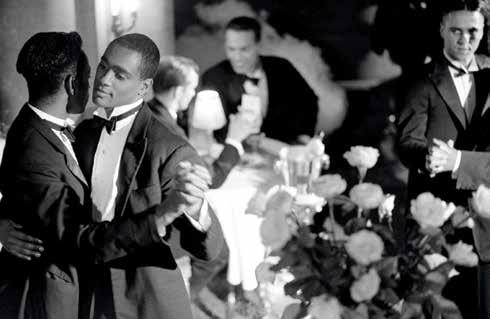
Looking for Langston
Friday, June 21, 6 pm
Pressure
Saturday, June 22, 3 pm
Young Soul Rebels
Saturday, June 22, 6 p.m.
$12 | $8 Speed
Speed Art Museum
“Pressure” is lauded as the first Black British full length feature film arrived in 1976, but was not widely released until 1978 because the British Film Institute was afraid of its depiction of police violence. Directed by Horace Ové, “Pressure” is a Black consciousness raising story that follows Tony, a newly graduated young man looking to make his way
of the day, as well as Tony’s blossoming intersectional thought in his tussles with his brother and parents. It is a realistic and powerful film worthy of its status among cult classics like “They Harder They Come” and “Babylon.”
Thirteen years later, Isaac Julien, a member of the Sankofa Film and Video Collective, delivers not only another classic of Black British cinema, but of New Queer Cinema too. “Looking for Langston” mixes archival footage with gorgeous, newly shot black and white photography to bring the private world of Langston Hughes to life. This fantastical film frames Black bodies through a dreamy lens, delivering photography that illuminates perfect specimens in statuesque glory. Using the historical figure of Langston Hughes, who may or may not have been gay, Julien is exploring
what he calls the ‘Harlem Renaissance’s closet,” with a camera turned on the high society gay men of the time. “Looking for Langston” will be presented with a follow-up talk from the Speed’s Curator of African and Native American Collections, Dr. fari nzinga, who most recently, was a scholar in residence at the bell hooks Center at Berea College.
“Looking for Langston” is a staple of museum exhibits and African American Studies programs around the world. Julien followed it up with a feature length, musicfilled murder mystery that could easily

play any mall Cineplex with its 90s color palette and cool clothes. Released in 1991, “Young Soul Rebels” follows two soulboys as they try to legitimize their DJ careers in 1977 London, all against the backdrop of the Queen’s Silver Jubilee. Like “Pressure,” this is a coming-of-age film that uses a wide cast of characters, including punks and skins and teds, to illustrate a 1970s attitude towards Black people, and in the process shows that much hasn’t changed in the years since.
It is also an interrogation of Queer history, featuring an openly gay co-lead who is able to express love and affection and is celebrated for it, not an easy feat for 1991. “Young Soul Rebels” is obviously influenced by “Pressure,” with parallels between the supporting women characters in both films in look and comportment, the execution of the police interrogations,
and the way the crowd scenes are filmed. I also found myself thinking a lot about a movie that was a sleeper hit just a year after “Rebels” was released, Neil Jordan’s “The Crying Game.” Irish director Jordan is both white and straight, so the comparison is more a study in how outsiders viewed the multi-cultural gay underground of London as compared to Julien’s take on a scene he was very much a part of, if not a pillar of himself. “The Crying Game” is a movie that utilizes queerness to create shocking gotcha moments, “Young Soul Rebels” simply shows affection and love
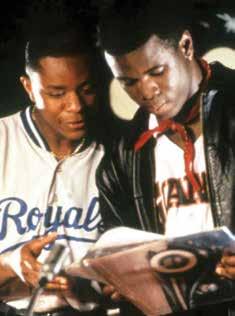
among gay men to be beautiful, and most importantly, unapologetically hot and desirable, equal in all ways to the straight love affair in the film.
“Young Soul Rebels” is a brightly lit look at a time from the filmmaker’s youth, with a whiff of nostalgia. While the murder mystery at its core is not well executed, the lead characters are a delight to hang with, and the soundtrack is full of funky needle drops, making this a film whose vibe carries it far. Watch it not only to learn more about 1977 London, but also to learn about early 90s cinema in general, and New Queer Cinema in particular.
JUNE 19-JULY 2, 2024 LEO WEEKLY | 27 FILM
Photos From l to r: “Looking for Langston,” “Pressure,” “Young Soul Rebels” Courtesy of Speed Cinema
FREE WILL ASTROLOGY
Week of June 19
ROB BREZSNY
ARIES (March 21-April 19): I love being logical and reasonable! The scientific method is one of my favorite ways to understand how the world works. I am a big fan of trying to ascertain the objective facts about any situation I am in. However, I also love being intuitive and open to mystical perceptions. I don’t trust every one of my feelings as an infallible source of truth, but I rely on them a lot to guide my decisions. And I also believe that it’s sometimes impossible to figure out the objective facts. In the coming weeks, Aries, I suggest you give more weight than usual to the second set of perspectives I described. Don’t be crazily illogical, but proceed as if logic alone won’t provide the insights you need most.
TAURUS (April 20-May 20): In their book
*Your Symphony of Selves*, Jordan Gruber and James Fadiman propose a refreshing theory about human nature. They say that each of us is a community of multiple selves. It’s perfectly natural and healthy for us to be an amalgam of various voices, each with distinctive needs and forms of expression. We should celebrate our multifaceted identity and honor the richness it affords us. According to my analysis of astrological omens, the coming weeks will be an excellent time for you to exult in your own symphony of selves and make it a central feature of your self-understanding.
GEMINI (May 21-June 20): In the second half of 2012 and the first half of 2013, you launched a journey that will finally culminate soon. What a long, strange, and interesting trip it has been! The innovations you activated during that time have mostly ripened, though not entirely. The hopes that arose in you have brought mixed results, but the predominant themes have been *entertaining lessons* and *soulful success*. I hope you will give yourself a congratulatory gift, dear Gemini. I hope you will luxuriate in a ritual celebration to commemorate your epic journey. The process hasn’t been perfect, but even the imperfections have been magical additions to your life story.
CANCER (June 21-July 22): I suspect you may have metaphorical resemblances to a lightning rod in the coming weeks. Just in case I’m right, I urge you not to stroll across open fields during thunderstorms. On the other hand, I recommend that you be fully available to receive bolts of inspiration and insight. Put yourself in the presence of fascinating events, intriguing people, and stirring art. Make yourself ready and eager for the marvelous.
LEO (July 23-Aug. 22): “It’s hard to get lost if you don’t know where you’re going,” said experimental filmmaker Jim Jarmusch. He’s implying that there’s potential value in getting lost. Unexpected discoveries might arrive that contribute to the creative process. But that will only happen if you first have a clear vision of where you’re headed. Jarmusch’s movies benefit from this approach. They’re fun for me to watch because he knows exactly what he wants to create but is also willing to get lost and wander around in search of serendipitous inspirations. This is the approach I recommend for you in the coming weeks, dear Leo.
VIRGO (Aug. 23-Sept. 22): Does any person or institution own a part of you? Has anyone stolen some of your power? Does anyone insist that only they can give you what you need? If there are people who fit those descriptions, Virgo, the coming weeks will be an excellent time to fix the problems. According to my understanding of life’s rhythms, you can summon the ingenuity and strength to reclaim what rightfully belongs to you. You can recover any sovereignty and authority you may have surrendered or lost.
LIBRA (Sept. 23-Oct. 22): In ancient Greek myth, Sisyphus was a forlorn character punished by the gods. He was required to push a boulder from the bottom to the top of a hill. But each time he neared the peak, the big rock, which had been enchanted by the crabby god Zeus, slipped away and rolled back down the hill. The story says that Sisyphus had to do this for all eternity. If there have been even minor similarities between you and him, Libra, that will change in the coming months. I predict you will finally succeed— is this your fifth attempt?—in finishing a task or project that has, up until now, been frustrating.
SCORPIO (Oct. 23-Nov. 21): Is it possible to reap spiritual epiphanies while having sex? Can intense physical pleasure be a meditation that provokes enlightened awareness? Can joy and bliss bring learning experiences as valuable as teachings that arise from suffering? Here are my answers to those three questions, Scorpio, especially for you during the next four weeks: yes, yes, and yes. My astrological ruminations tell me that you are primed to harvest divine favors as you quest for delight.
SAGITTARIUS (Nov. 22-Dec. 21): Your animal magnetism and charisma could be wildly potent in the coming weeks. I’m worried that as a result, you may be susceptible to narcissistic feelings of entitlement.
You will be extra attractive, maybe even irresistible! But now that you have received my little warning, I hope you will avoid that fate. Instead, you will harness your personal charm to spread blessings everywhere you go. You will activate a generosity of spirit in yourself that awakens and inspires others. Do not underestimate the electrifying energy pouring out of you, Sagittarius. Vow to make it a healing medicine and not a chaotic disruptor.
CAPRICORN (Dec. 22-Jan. 19): I’ve had thousands of crucial teachers. There would be no such thing as me without their life-changing influences. Among that vast array have been 28 teachers whose wisdom has been especially riveting. I feel gratitude for them every day. And among those 28 have been five geniuses who taught me so much so fast in a short period of time that I am still integrating their lessons. One of those is Capricorn storyteller and mythologist Michael Meade. I offer you these thoughts because I suspect you are close to getting a major download from a guide who can be for you what Meade has been for me. At the very least, you will engage with an educational source akin to my top 28.
AQUARIUS (Jan. 20-Feb. 18): In one of my previous lifetimes, I was a bricoleur—a collector and seller of junk who re-used the castaway stuff in new ways. That’s one reason why, during my current destiny, I am a passionate advocate for recycling, renewal, and redemption—both in the literal and metaphorical senses. I am tuned in to splendor that might be hidden within decay, treasures that are embedded in trash, and bliss that can be retrieved from pain. So I’m excited about your prospects in the coming weeks, Aquarius. If you so desire, you can specialize in my specialties.
PISCES (Feb. 19-March 20): Some people imagine that being creative means having nonstop spontaneous fun. They think it’s primarily exuberant, adventurous, and liberating. As a person who prizes imaginative artistry, I can testify that this description is accurate some of the time. But more often, the creative process involves meticulous organization and discipline, periods of trial-and-error experimentation, and plenty of doubt and uncertainty. It’s hard work that requires persistence and faith. Having said that, Pisces, I am happy to say you are now in a phase when the freewheeling aspects of creativity will be extra available. You’re more likely than usual to enjoy spontaneous fun while dreaming up novel ideas and fresh approaches. Channel this energy into an art form or simply into the way you live your life.
Homework: If you’d like to give me a gift for my birthday on June 23, consider signing up for my newsletter: Newsletter.FreeWillAstrology.com
28 | LEO WEEKLY JUNE 19-JULY 2, 2024
ETC. Newsletter.FreeWillAstrology.com freewillastrology@freewillastrology.com BrezsnyAstrology@gmail.com
BRUISE CONTROL
BY DAN SAVAGE
Hey Dan: My question could come across as kink shaming. That is not my intent. I am a habitual selfharmer who is planning to seek therapy. However, I find myself unable to stop comparing attitudes towards the kind of self-harm I’ve engaged in with attitudes toward BDSM pain play. When I was a teenager, I would describe myself as a masochist because I was unaware of the sexual connotations of the word, and I bought into the stereotype that self-harm was only self-harm when it was done by an emo kid cutting themselves with a razor blade. My method was different: blunt force. In my view, the self-harm I engage in is no less ethical or healthy than the kind of “pain play” I’ve read about others engaging in.
My self-harm provides catharsis for the sadness and anger I feel. Sometimes when my negative emotions are intense, I feel as if they will burst my body and I am desperate to release them. In these times I find relief in turning emotional pain into physical pain. I haven’t always done this as safely as I could. Last year, during one of the most difficult years of my life, I failed to consider how the visible marks on my body might bother others. I wound up upsetting my coworkers and now I am facing disciplinary action at work, which has only added to my stress. I’ve read that people into BDSM engage in pain play in seek of catharsis. I also do it for catharsis. The only difference seems to be the motive. Mine is to cope, and theirs is sexual gratification. I now know how hard I can hit myself without causing lasting injuries. I typically do it alone and discreetly, so non-consenting parties are not involved, and I of course consent to the pain I inflict on myself. Yet what I do is perceived as unhealthy and BDSM pain play is considered healthy. Am I wrong to wonder why that is? I feel that people are told not to judge others for their kinks while I am judged and shamed for what I do safely, consensually, and in private. –Perplexed About Intensely Nebulous Esoteric Distinctions
P.S. I have very little sexual experience personally due to almost no one finding me attractive.
Before I bring in the big guns — before I roll out our guest experts — I wanna encourage you to follow through on your plan to see a therapist. Advice columns are great, of course, and the insights and/or dick jokes of a halfway decent advice columnist can help. But your issues — your physical and emotional safety — require more thorough analysis than I could possibly provide for you in this space.
Alright, PAINED, with that said… I shared your letter with Leigh Cowart, the author of Hurts So Good: The Science and Culture of Pain on Purpose, a terrifically entertaining and insightful book about the different ways different kinds of people seek out different kinds of pain.
“I don’t think PAINED is seeing similarities
where there are none,” said Cowart. “What people who practice BDSM do and what PAINED is doing are both ways of using aversive sensation and the brain’s reward system to create a desired emotional state.”
Americans, as Cowart argues in their book, assess consensual suffering — and so much else — using moral judgments that aren’t always consistent or logical. People who seek out pain in socially sanctioned ways, e.g., long-distance runners, mixed martial artists, celebrities who go on chat shows and eat chicken wings slathered in extreme hot sauces, are looked up to — particularly when their pain-seeking behaviors out, “[come] draped in the dignity of athleticism,” as Cowart puts it — while BDSM players are subjected to a lot of judgment and shame.
Now, numerous studies have shown that BDSM players are just as emotionally healthy as vanilla people, which is why mental health professionals no longer pathologize people into consensual sadomasochism. But kink muggles don’t admire kinksters the same way they admire, say, long-distance runners. A masochist and a marathoner may push themselves to their limits for similar reasons — both may be seeking the rush of endorphins freely chosen pain can induce, both may be seeking the kind of emotional catharsis freely chosen pain can provide.
“While pain on purpose for emotional benefit is common and normal, and while it is not inherently harmful,” Cowart said, “it can be harmful — so it deserves a thoughtful risk analysis to assess for avoidable dangers.”
To that end, PAINED, Cowart wants you — they want any person seeking out pain on purpose — to think about these questions:
• “Am I emotionally regulated enough to safely give myself catharsis through pain?”
• “Am I looking to feel pain that is temporary or am I risking harm with lasting effects?”
• “Do I feel like I can stop or does this feel compulsive?”
No one wants to see of themselves as damaged, PAINED, which means you’ll have to be on your guard against rationalizing behaviors that actually might be compulsive and harmful — and if you’re showing up to work covered in bruises so alarming you might lose your job over them, that points to compulsive and harmful. So, I would urge you not to engage in solo pain play — if that’s how you wanna think of it for now — while you think about Cowart’s questions and wait for your first appointment with your therapist.
Cowart had another suggestion for you: If you are emotionally well-regulated, if you aren’t doing yourself lasting harm, and you — and your therapist — don’t think this is compulsive behavior, you should find some like-minded friends.
“Generally speaking, in potentially risky
situations — be it BDSM or rock climbing or swimming or fight club — humans mitigate risk with the buddy system,” said Cowart. “If you’re going to do something dangerous, you want to be able to say, ‘Hey watch this!’, before you jump, in case someone needs to save your life. If PAINED explored pain catharsis in a more social, structured environment, where there are more explicitly defined boundaries for engagement, he may find deepening catharsis through pain shared.”
Your local BDSM group is a good place to find the kind of social, structured environment Cowart is talking about. Most people at the munch you’ll attend first and the play party you might attend later will be sexually aroused by BDSM, PAINED, but in every large kink group there are serious players who are seeking emotional release, not sexual release.
Now, for a second opinion, we turn to another Leigh: Leigh Wakeford, a California-based psychotherapist who specializes in shame-resilience work with queer and kinky or kink-curious couples and individuals.
“I am sorry to hear that PAINED feels judged and shamed for the way in which they have learned to cope with their sadness and anger,” said Wakeford, “and how their relationship to pain compares to the kind of pain experienced by partners engaging in BDSM pain-play, is a valid thing to contemplate.”
There are, however, easily identifiable makers that can help to distinguish healthy BDSM play — which may or may not include consensual and controlled pain play — from emotional or physical abuse.
“Pain-play in BDSM operates within clearly defined boundaries and collaborative parameters that allow for pain to be safely expressed and experienced between the consenting partners,” said Wakeford. “These ‘rules’ make the interaction with pain playful, pleasurable, and potentially transformative. And there’s a greater degree of safety when these things are experienced with another than is possible when engaging in these things alone. What comes to mind for me here are the numerous kinksters who have lost their lives during solo ‘breath control’ play due to the very fact that another was not present to safely assist and witness.”
So, it’s unanimous: Cowart, Wakeford, and Savage all vote for finding friends who share your interest in safe, sane, and consensual impact play. Connecting with others who share your need for for release through pain — even if it takes some effort to find them — will not just make you safer, PAINED, it will transform something that currently isolates you from others into something that helps you connect with others.
Good luck.
P.S. Kink scenes tend to be more welcoming spaces for people who don’t feel conventionally attractive. For many in the kink scene, PAINED, it’s your ability to safely dish it out (your skill set as a Dom) and/or your ability to take it (your appetite as a sub) that matters most, not your jawline or your waistline.
Follow Leigh Cowart on Instagram, Threads, and Twitter @voraciousbrain.
Hey Dan: I had a sexual experience that’s left me feeling shitty. Met another gay man on an apps, got wasted together at a leather bar, fucked at his place on a number of substances. He stopped when I was too out of it to proceed, he played some music, and let me crash with him until I’d sobered up enough to get a Lyft. When we fucked, I’d asked him to degrade me. I asked him to do and say things an abusive ex had often done to me without consent. Why, when wasted and fucking, did I try and recreate sexual assaults I had experienced? In the moment: hot. In the aftermath, I feel as horrible as I did when those events first happened to me.
–Super Upset Boy
While I had him on the line, SUB, I asked Leigh Wakeford to weigh in on your question as well.
“Recreating a traumatic sexual experience is not uncommon among survivors of abuse,” said Wakeford, “So, most importantly SUB needs to hear that he is not alone. And he also needs to know that one of the beautiful offerings of BDSM play is the potential for revisiting and re-narrating traumatic encounters in a safe, consensual and empowering way, which can help us reclaim things that were taken from us without our permission.”
What your abusive ex took from you is a kind of consensual D/s sex play — involving humiliation, degradation, verbal abuse, etc. — that you may not have been consciously aware you were into before his abuse started. Right now, these things may be tainted by their association with your ex, SUB, but that doesn’t make them bad things. Just as sex in the missionary position in the absence of consent will be experienced as assault by someone who might otherwise enjoy sex in the. Missionary position, kinky like humiliation and degradation in the absence of consent will be experienced abuse by someone who might otherwise enjoy them.
“SUB had some shitty and bad things happen to him,” added Wakeford “but he is not a bad or shitty person for wanting to experience pleasure in ways that are uniquely exciting to him.”
Which may be exactly what you did that night, SUB: In an effort to create new and positive associations with your kinks, you went out and found some you intuitively felt you could trust — and your intuition proved to be correct, as evidence by the way he took care of you when you had to tap out.
“But in my experience, the most effective and safest to create a new narrative around a past traumatic encounter is also the most sober possible way,” said Wakeford. “Being in a less conscious state can interfere with the clarity and level of control required to heal and grow.”
Follow Leigh Wakeford is on Instagram and Threads @LeighWakefordTherapy. His website is LeighWakefordTherapy.com.
Got problems? Yes, you do! Email your question for the column to mailbox@savage.love! Or record your question for the Savage Lovecast at savage.love/askdan! Podcasts, columns and more at Savage.Love
JUNE 19-JULY 2, 2024 LEO WEEKLY | 29
SAVAGE LOVE


In accordance with KRS 376.270 (Mechanic's Lien) this is to notify interested parties of a proposed sale of a motor vehicle. Repairs and storage fees will be recouped from this sale. Sale date will be June 17,2024 for the following vehicles:
2015 Hyundai Elantra KMHDH4AH6FU414600 Sophia Garcia
2009 Hyundai Vera KMHGC46E99U023424 Ismel Levya
2018 Hyundai Sonata 5NPE34AB7JH669231 Luke McMahan
2013 Hyundai Sonata 5NPEC4AB0DH640769 Debbie Owens
2016 Hyundai Tuscon KM8J33A27GU168570 Lisa Limanno
2017 Hyundai Santa Fe 5XYZUDLBXGG311959 Emani Sanderson
2014 Hyundai Sonata 5NPEB4AC7EH906883 Amos Joway
2017 Hyundai Sonata 5NPE24AF1HH491946 Af Title Comapny /Lasonya Sego
2017 Hyundai Sonata 5NPE24AF3HH576089 Dynasty Watkins
2008 Hyundai Vera KM8NU13C08U061497 Patrick Parker
Please feel free to contact our Dealership for additional information
The time of the sale is 1:00 PM on June 24, 2024. You must be present to bid, and must pay in full on the sale date with a Bill of Sale ONLY. Hyundai of Louisville 6633 Dixie Highway Louisville, KY 40258 502-214-4200

502-583-5111 is seeking ownership of 2014 vw beetle vin 3vwvt7atxem602565 owner carvana llc p.O. Box 29002 Phoenix, AZ 85038. You have until the final date of this publication of this legal notice to contact us.
Auto-Motion Inc 636 E. Broadway Louisville KY 40202 (502) 589-1155 is seeking to obtain a clear title to a 2014 Ford Focus SE VIN -1FADP3F28EL418602. Lien holder Americredit Financial PO Box 1510 Cockeysville MD 21030, owner Latasha Dunn 747 S Jackson St Louisville Ky 40203. You have 14 days from the last publication of this legal notice to notify me in writing.
30 | LEO WEEKLY JUNE 19-JULY 2, 2024
TYPECASTING
BY LUKE K. SCHREIBER
Puzzles Edited by Joel Fagliano
Luke K. Schreiber is a high school senior from Hoboken, N.J. He graduates this month and will attend Princeton University in the fall. Luke made his New York Times debut last December, a Monday puzzle with the theme ‘‘It’s Me Again.’’ His high school, Saint Peter’s Prep, announced the feat at an assembly. Afterward, he says, ‘‘it was fun seeing people compete for the fastest time.’’
ACROSS
1 One way to order coffee
6 Nike competitor
11 Supporting character in costume?
17 Relieves
19 Kiwi or cassowary
21 VCR medium
22 ‘‘RUFFALO’’ and ‘‘TWAIN’’?
24 Make comfier over time, as clothes
25 Receptacle for remains
26 Meat-and-pastry dish
27 Attempt to pull apart
29 Number that looks like 16Down in binary code
30 Not eliminated yet
32 Support for a swing
33 HARLO and SMAR?
36 Drinker’s structure made from stacked cans
39 Famed San Francisco theater, with ‘‘the’’
40 Like loose gemstones
41 ‘‘Sign me up!’’
42 ‘‘____ All That,’’ 2021 romcom remake
43 Rip-offs at the movies
45 Norse goddess of death
46 LORD and KEMP?
51 Camera type, for short
52 Only
Flavoring for ouzo or sambuca
Stops
Words of decree
check
59 Diego Rivera’s ‘‘The Allegory of California,’’ for one
60 Metal coatings
63 *O’NEIL* and *ROGERS*?
66 CEEEEENA and LENNNNNON?
70 Cutting tool with a reinforced spine
72 ____ fritas (Cuban French fries)
73 Cry of surprise upon discovering the culprit
74 Sole survivor in ‘‘Reservoir Dogs’’
77 Reply to a doubter
79 Baseball award given to Shohei Ohtani in ’23
81 Votes of confidence
82 Place for a stirrup
85 WILDERODDENBERRY?
87 Standard to exceed, metaphorically
88 Like security systems
90 Solar-wind particle

46 Sticky situations
Go with the flow
of a flight in which seatbelts must be worn
Portrayer of the show creator in ‘‘The Truman Show’’
S-O-L-O and L-A-N-G-E?
Palmer, familiarly
‘‘Ditto!’’
Give go
of a Caribbean nation
Workweek inits.
Roman farewell
The ‘‘S’’ of New York City’s
47 Mole or mile
48 Glam rock?
49 Preserves in slices, as meat
50 Big name in motor oil
52 Soybean product
55 First sultan of both Syria and Egypt
57 Cap worn by dervishes
59 Person cleaning a horse’s stable
61 The weather is a classically bland one
62 Neck and neck
64 Certain baseball stats
65 Severe social media punishment
67 Music for the masses?
68 Nine, in Italian
69 Has dinner
71 Anderson who directed ‘‘Asteroid City’’
72 One in plane clothes
74 ‘‘That’s on me’’
75 Novel fund-raising idea?
76 Glides over the coast, say
78 Favorably interprets
79 Tourist destination in northern India
80 Pick up
83 Titular character in a Menotti opera
84 Some vacation destinations
86 ‘‘Obviously’’
88 Did a great job on, in modern slang
89 What’s generated by solar panels
93 Rehab therapy, informally
95 Friend of Winnie-the-Pooh
96 Rap’s Sweatshirt
97 Sleeve style with slanted seams
98 Padova’s home
99 Not-so-good vibration?
101 Big name in tractors
102 Farmers’ rolls
106 ‘‘I forbid it’’
107 Leisurely gait
Last week’s answers 91 Glow
108Instrument with a vowel-heavy name
110 Tuna type
111 Fish often served with kabayaki sauce
113 Cubs’ home
114 Nickname for Isaac

JUNE 19-JULY 2, 2024 LEO WEEKLY | 31
92
94
96
102
103 ‘‘Great’’
104
105
106 Have
109 Moo goo pan 110 ‘‘Got it now’’ 112 RU$$ELL and? 115 ____-than-thou 116 Peaceful 117 Set
sights 118 Something found beneath an arch 119 Leaders
‘‘the’’ 120 ‘‘Lovergirl’’
DOWN 1 Title spy
a Robert Ludlum series 2 Canadian dollar coin 3 QB stat:
4 Cause to crack 5 High-fat
short 6
7
8
9
10
11
12
13
SIR train line 14 Auto refreshes? 15 Classic novel set in rural Nebraska 16 See 29-Across 17 Kind of kick in football 18 Easy mark 20 Gamers’ games 23 Subjective piece 28 Run of 31 Strong poker holding,
mally 33 Wine vessels 34 Thin sauce 35 Pope who met with Attila the Hun 37 French female friend 38 Max’s counterpart 39 Looney Tunes turtle 42 Gets to vote 44 Takes along
Part
100
‘‘Pshaw!’’
child detective
When repeated, nickname for Time’s 2023 Person of the Year
Younger Jetson kid
the nerve
one’s
of the fam, with
singer Marie
in
Abbr.
weight-loss diet, for
Golfer
Wispy cloud
Half
infor-
53
54
58
56
NEW YORK TIMES MAGAZINE CROSSWORD PUZZLE






































































